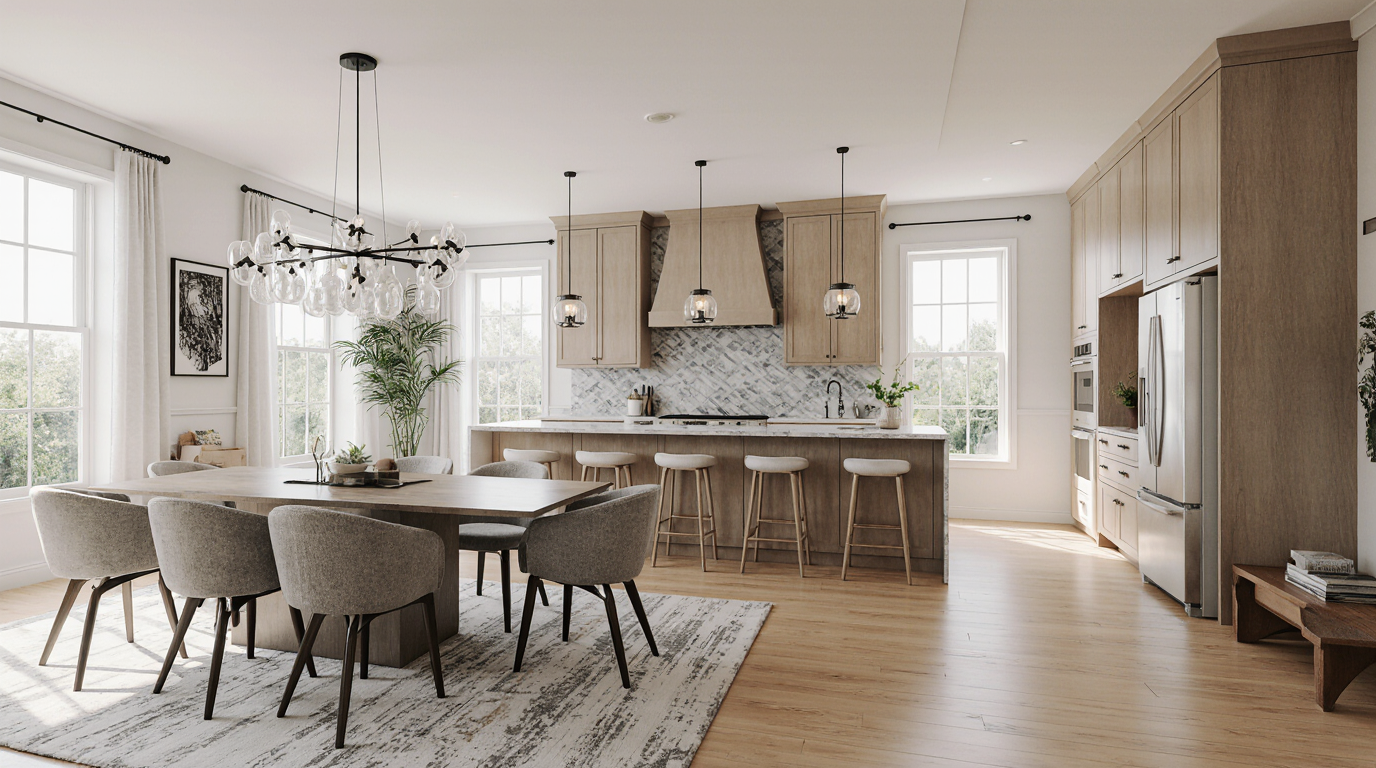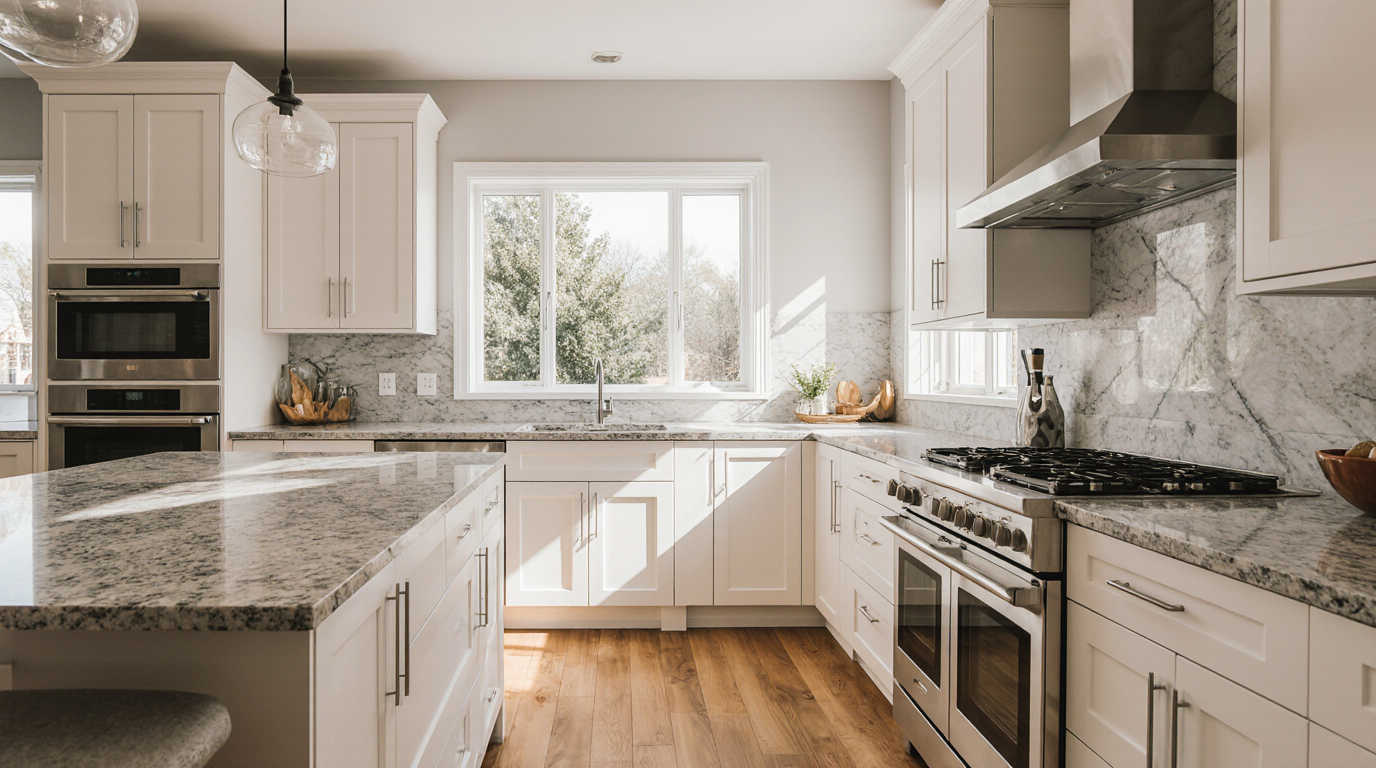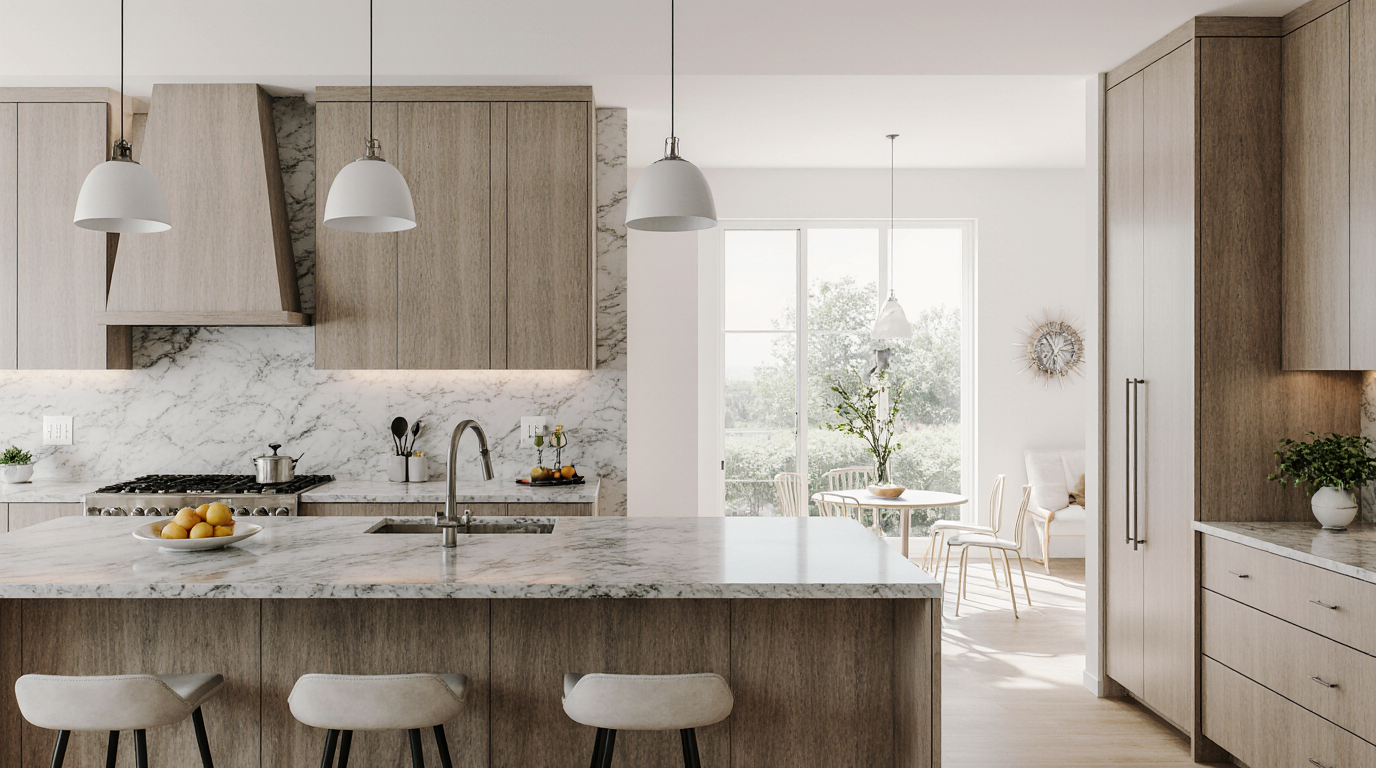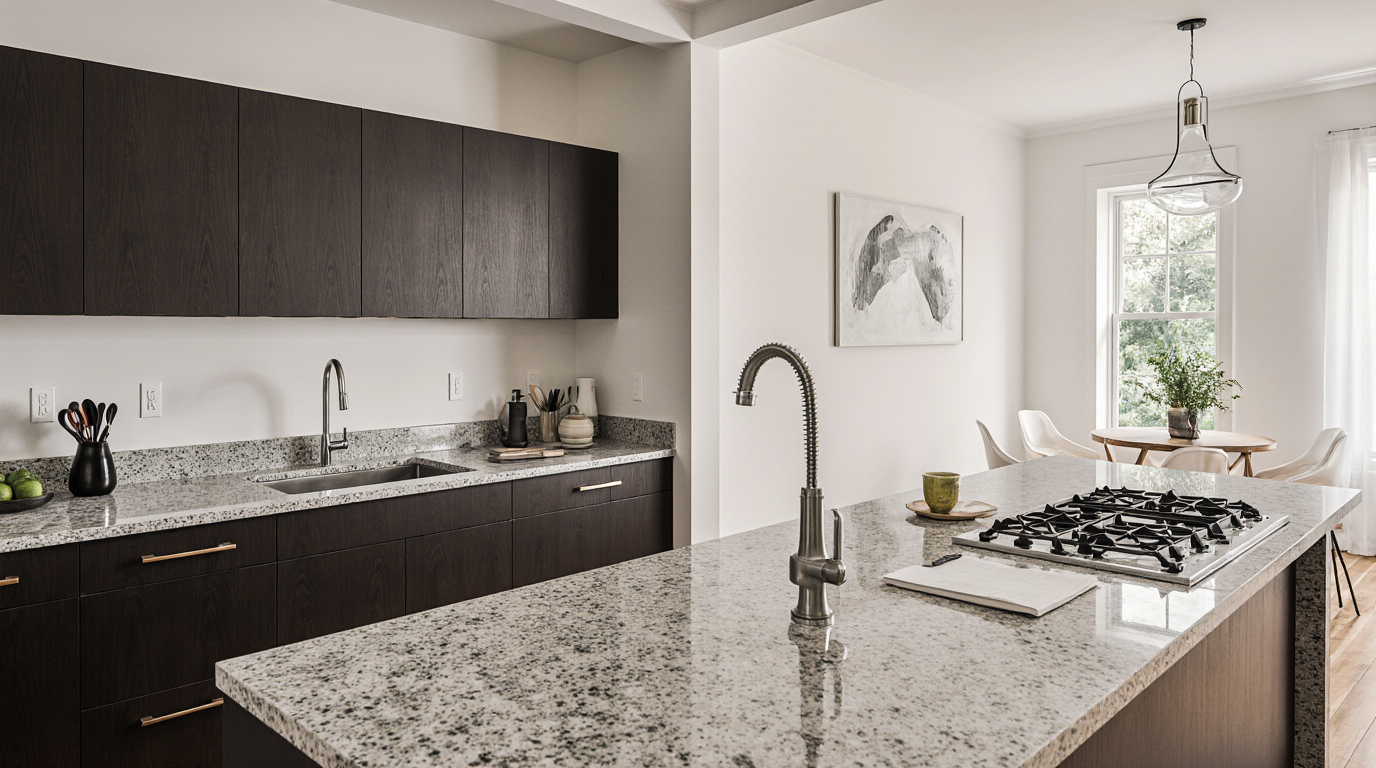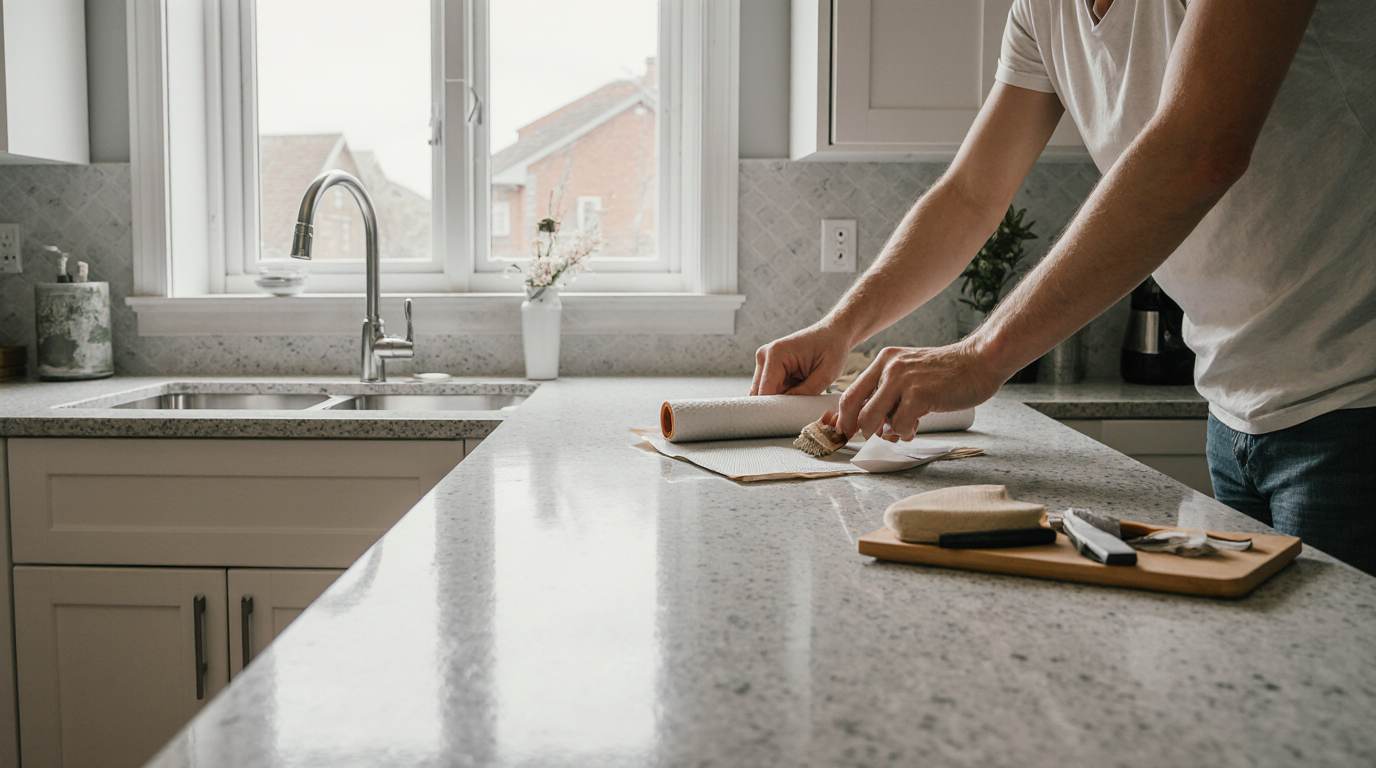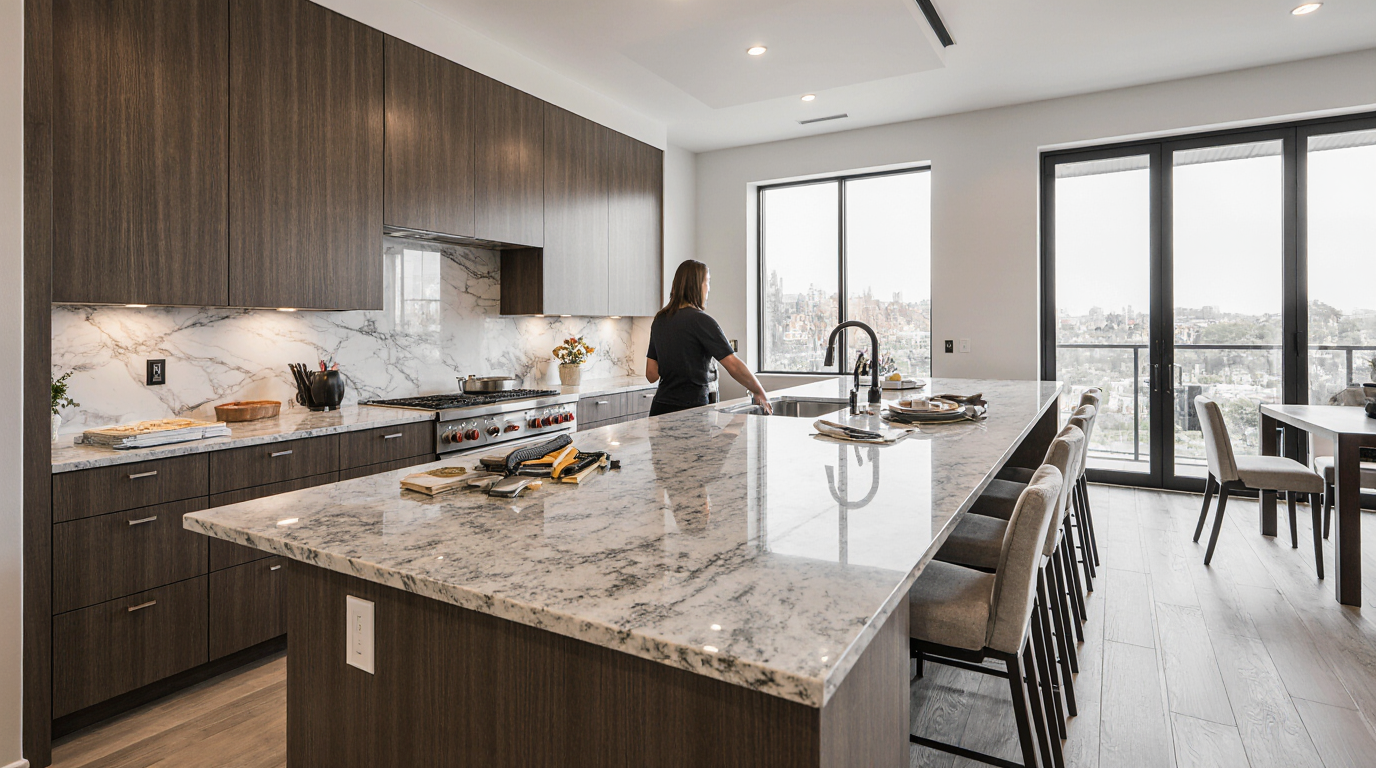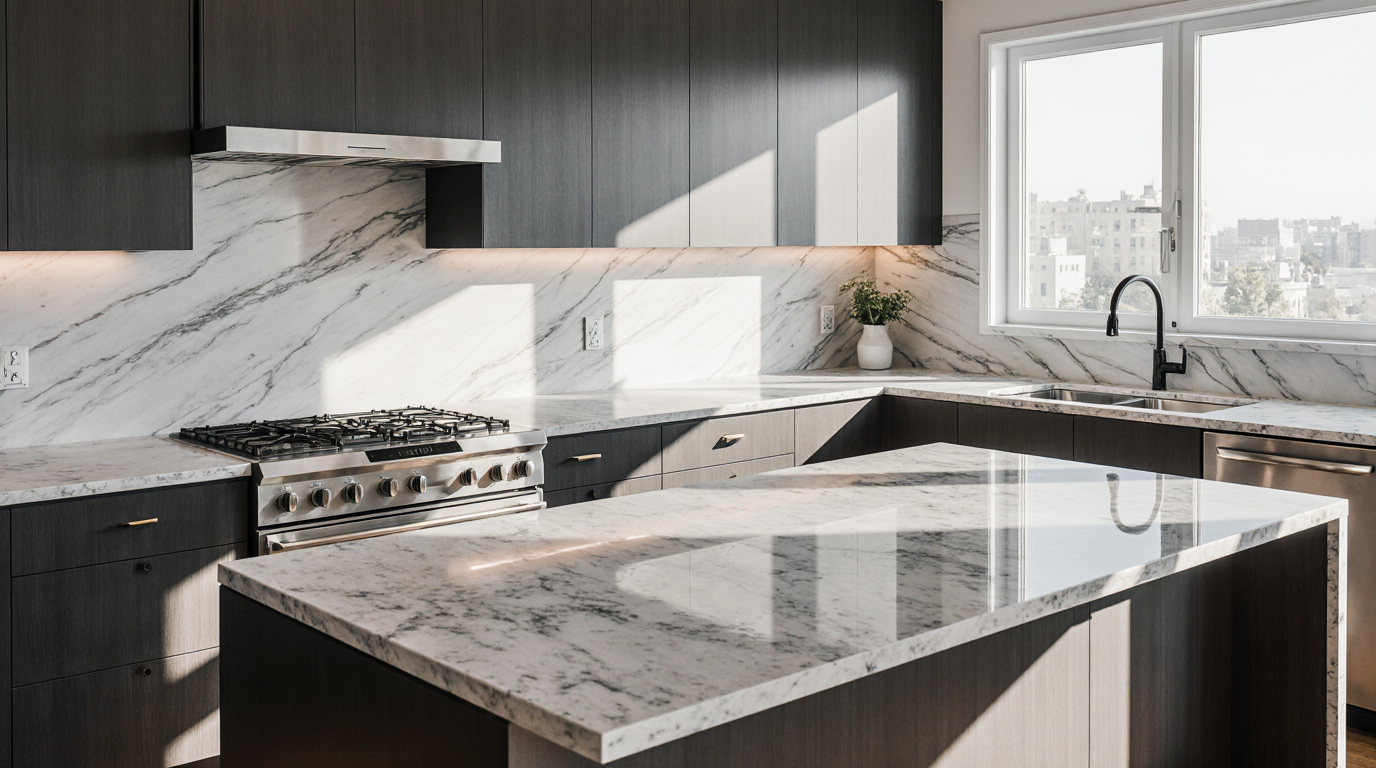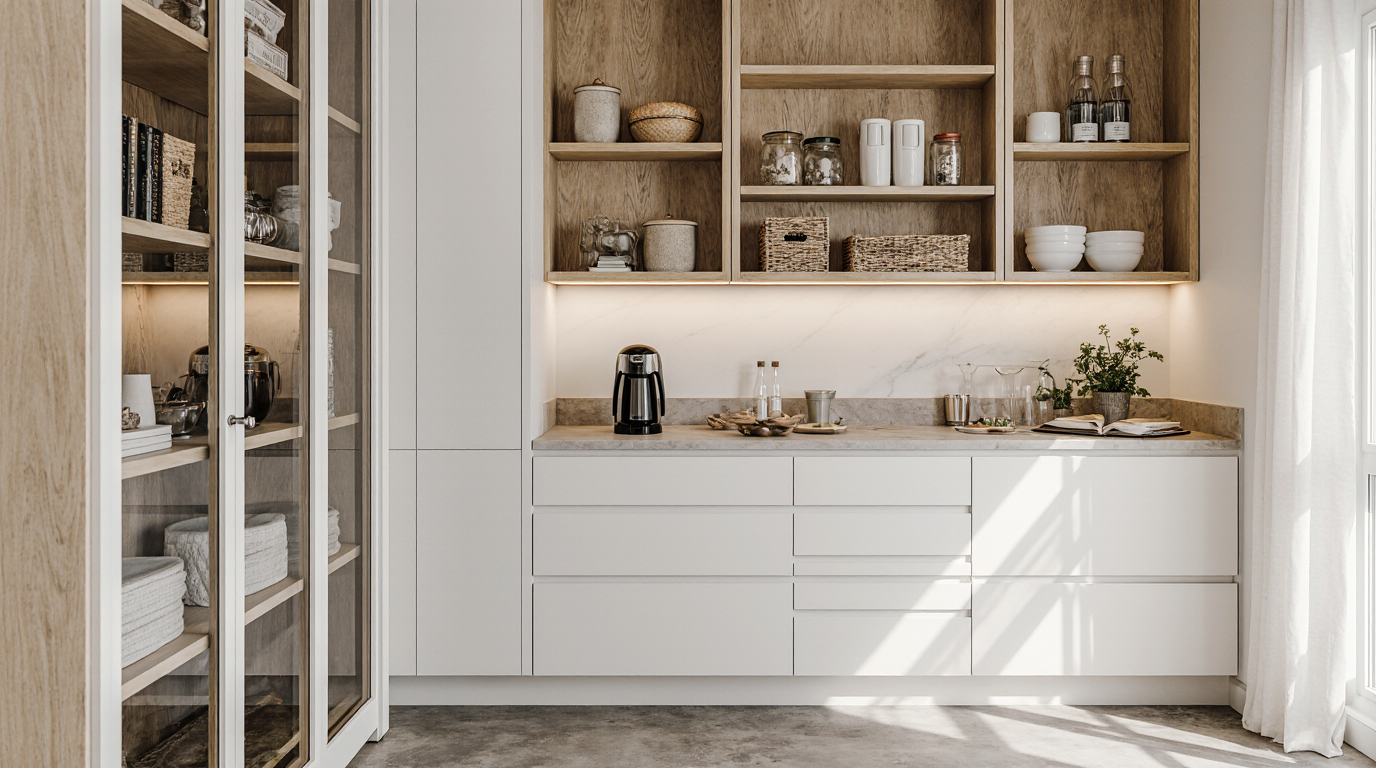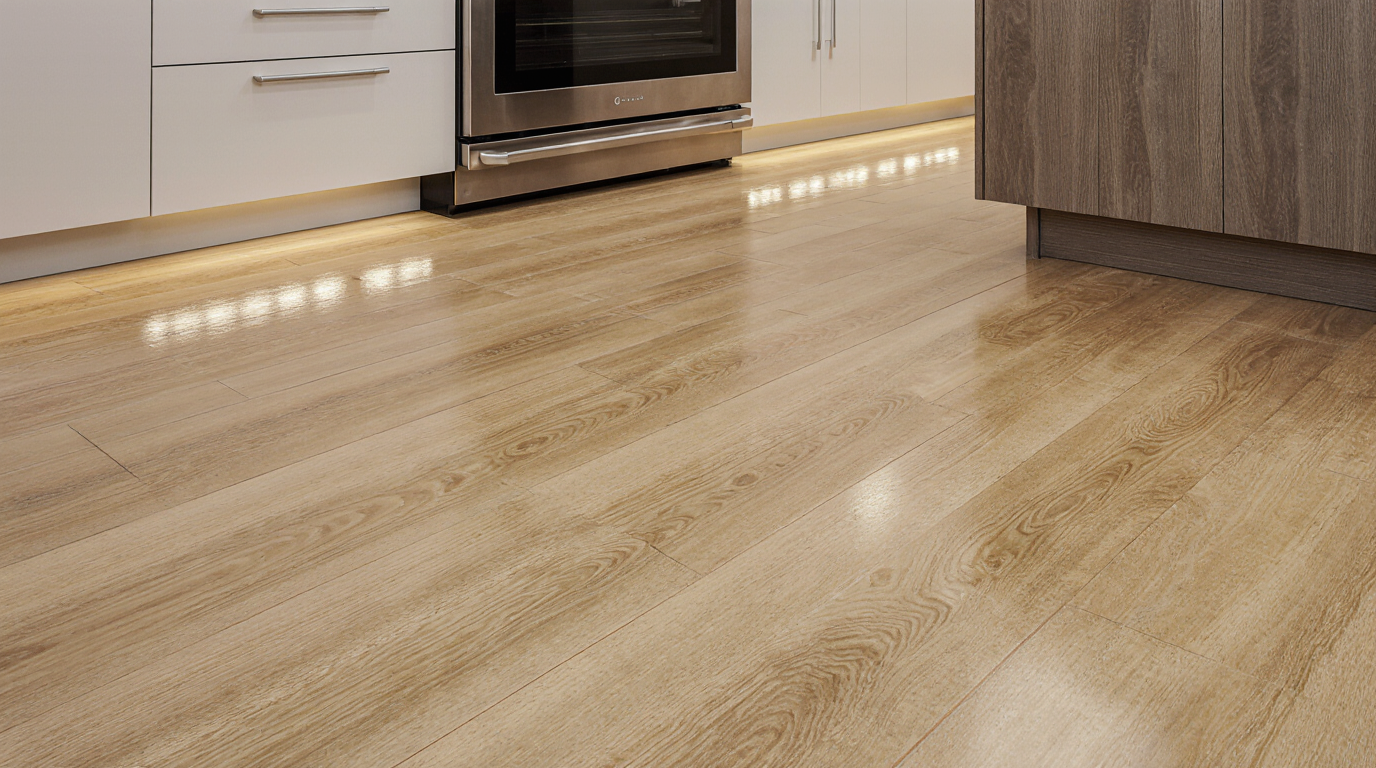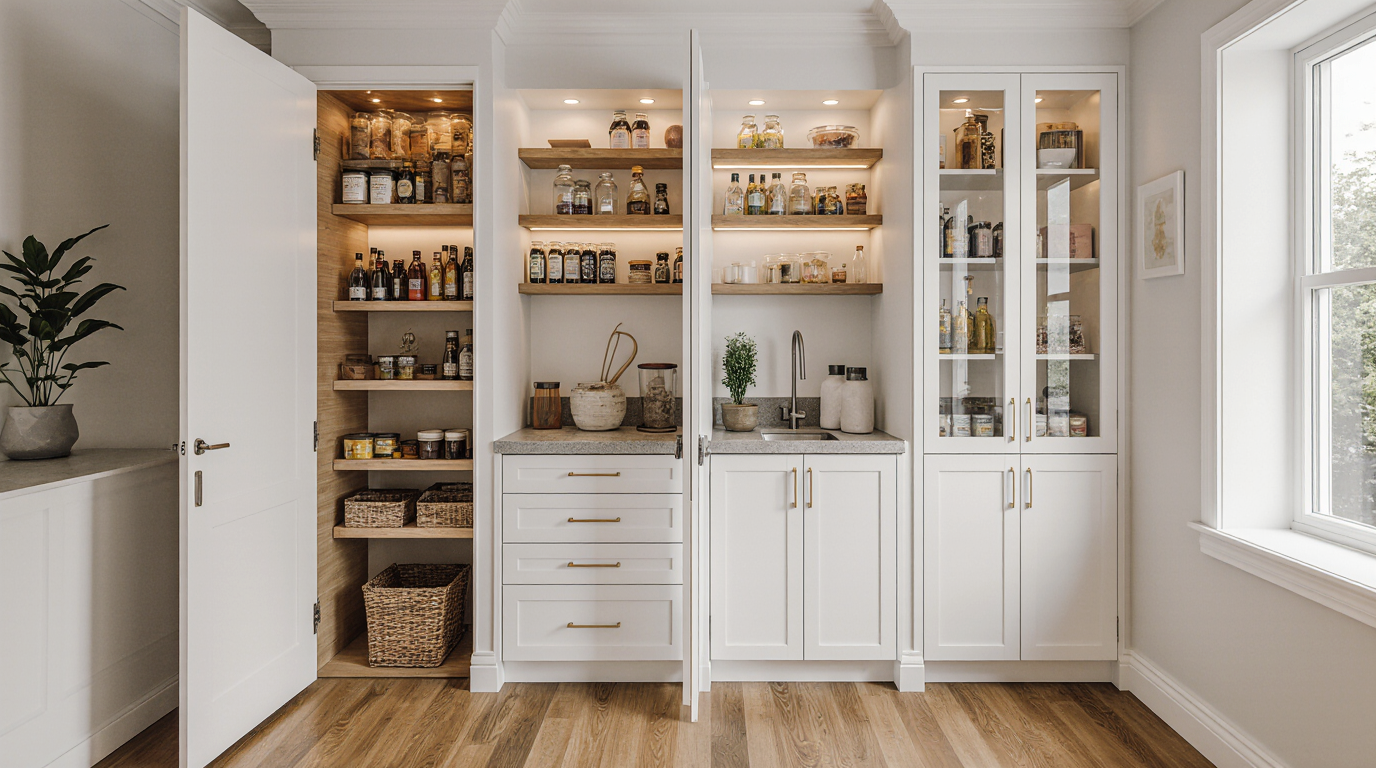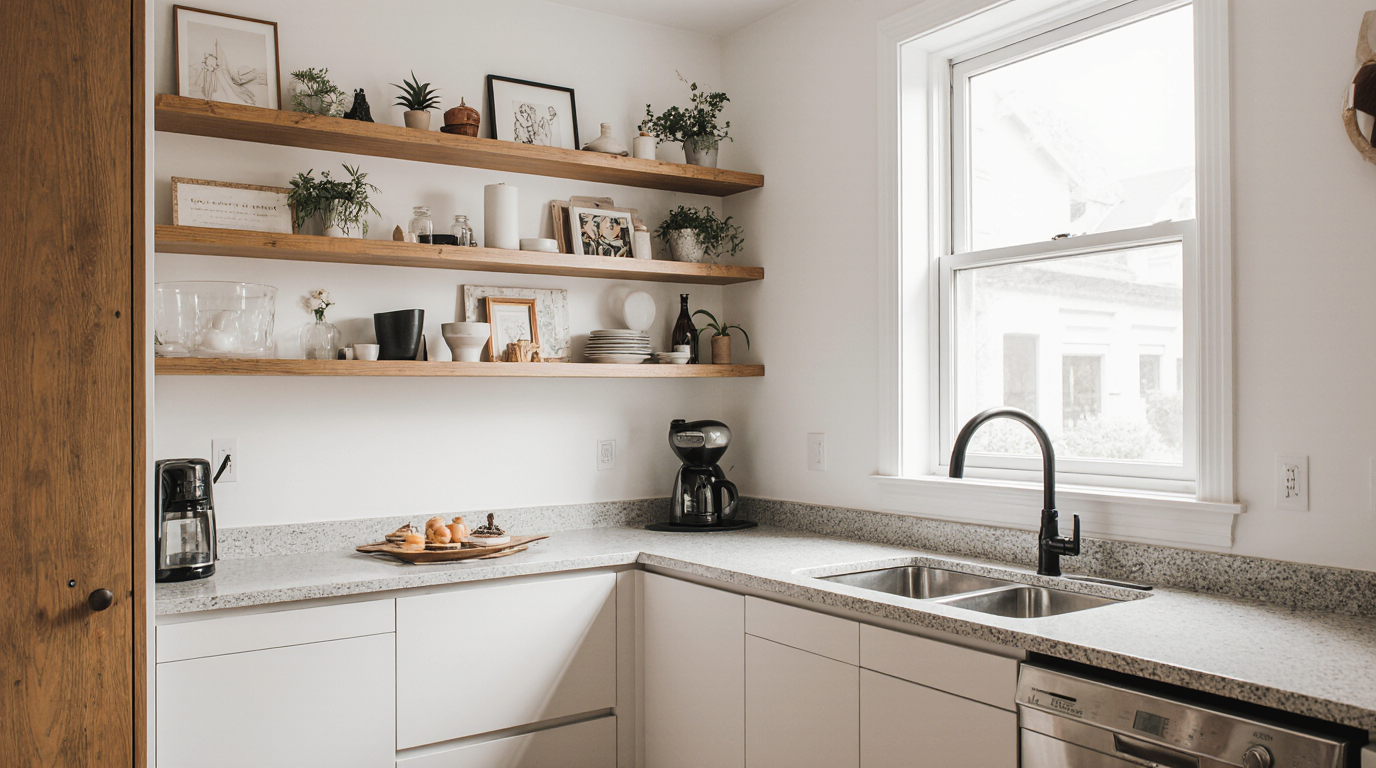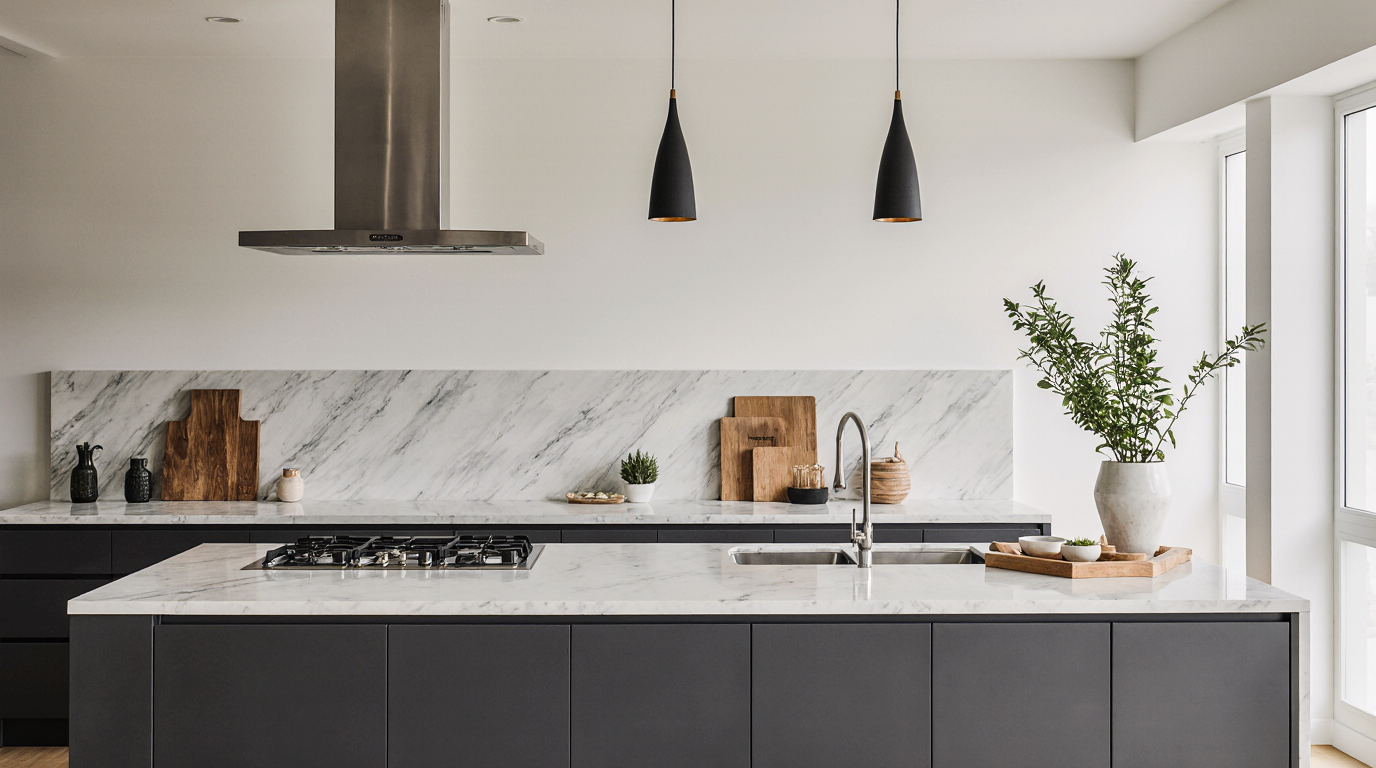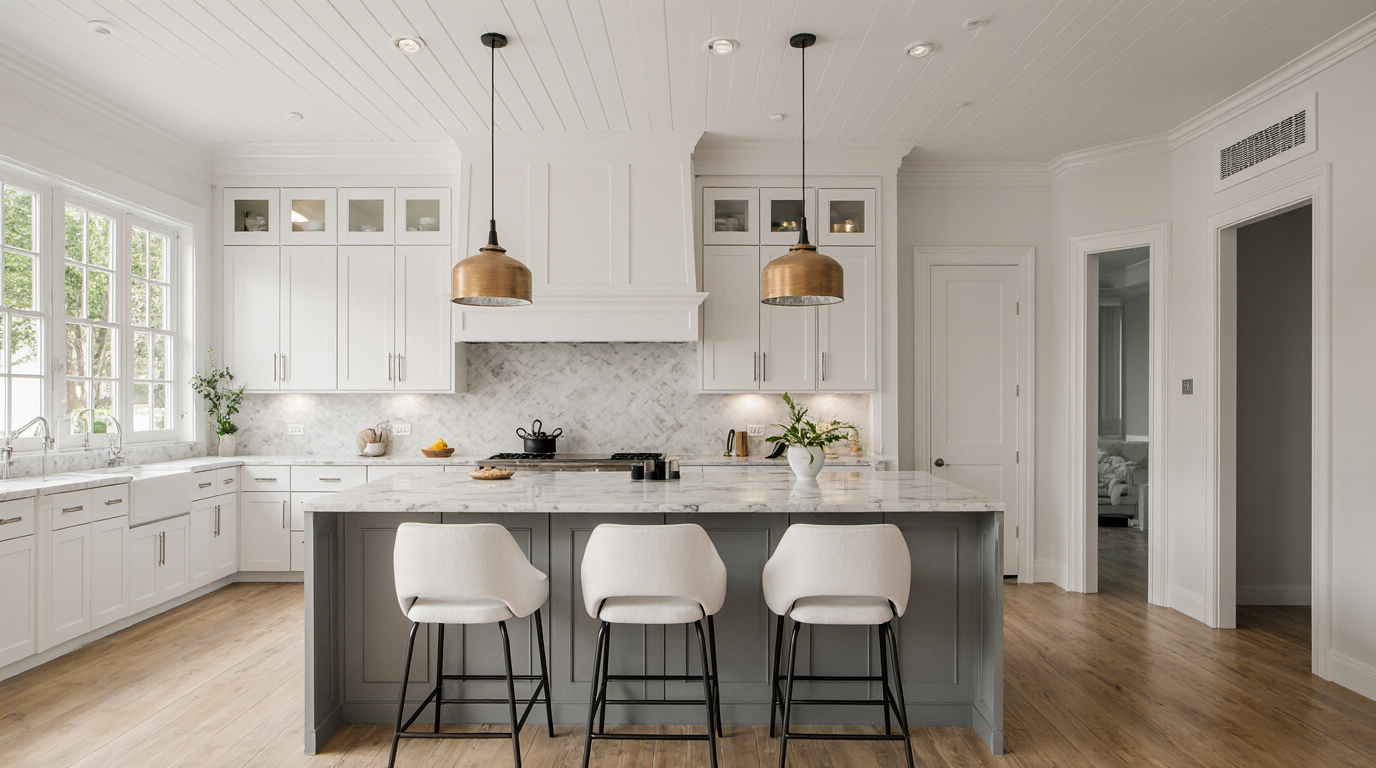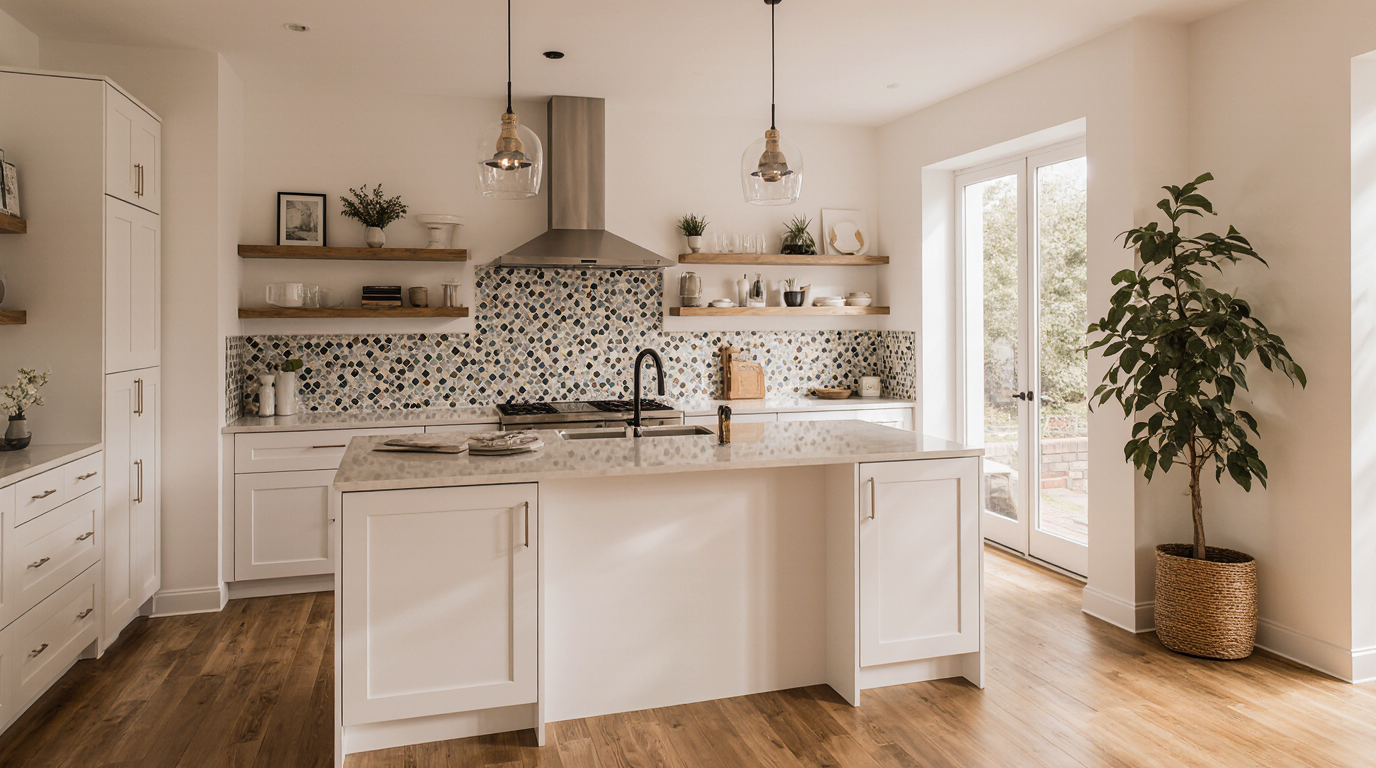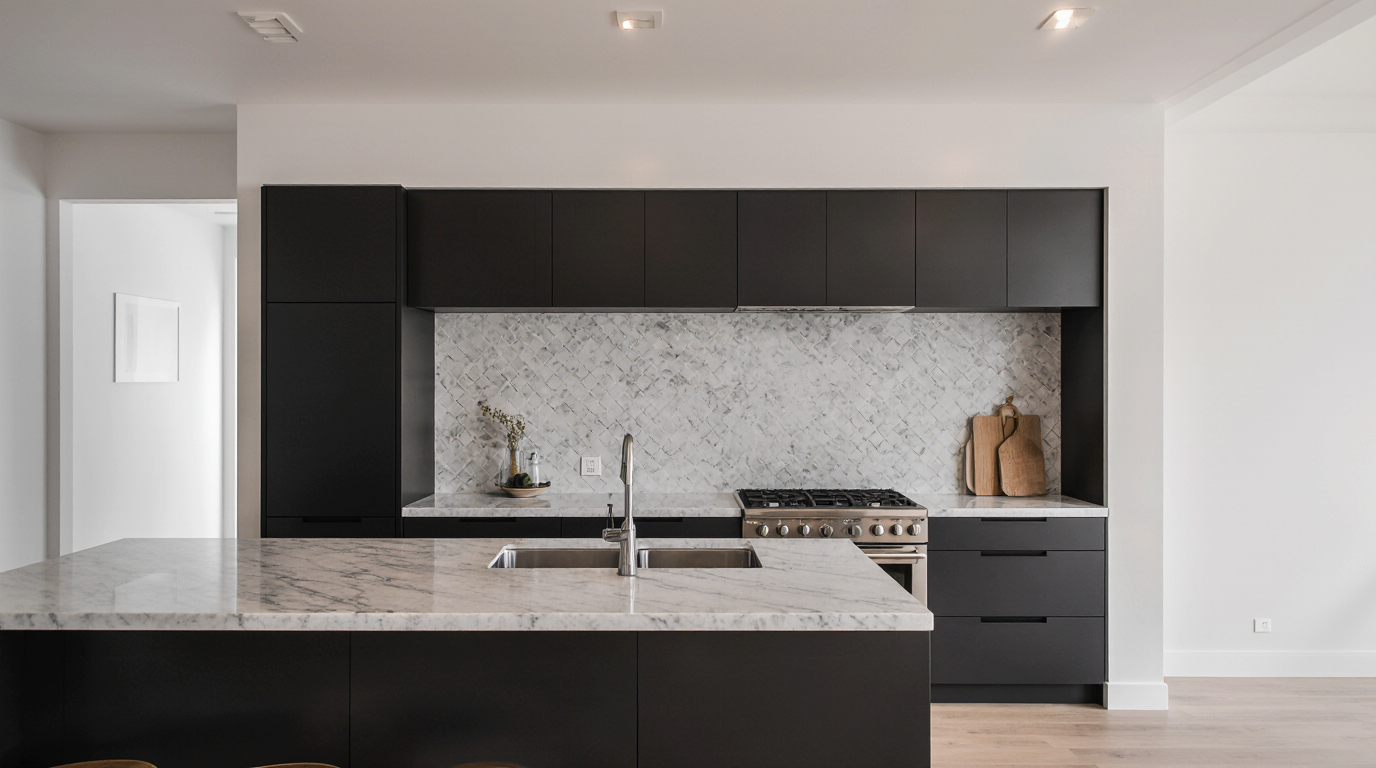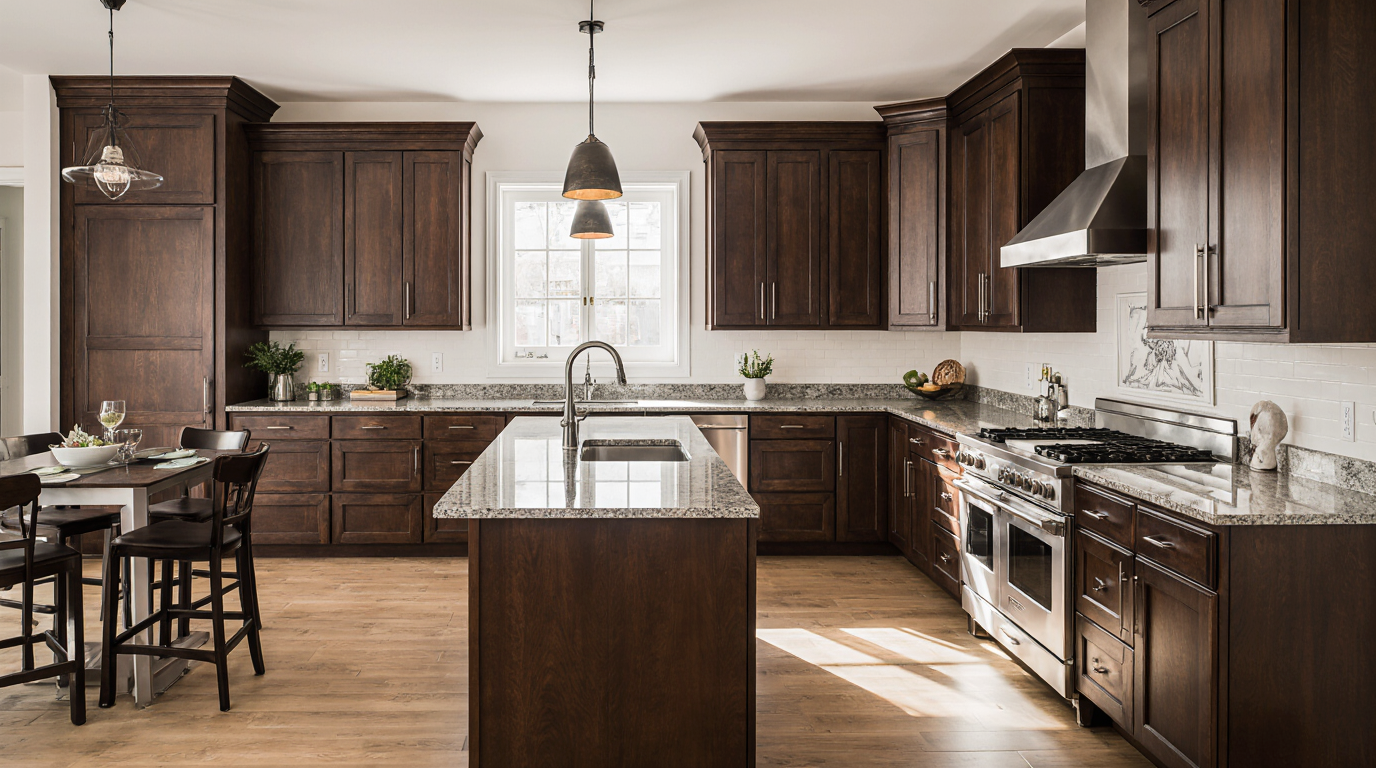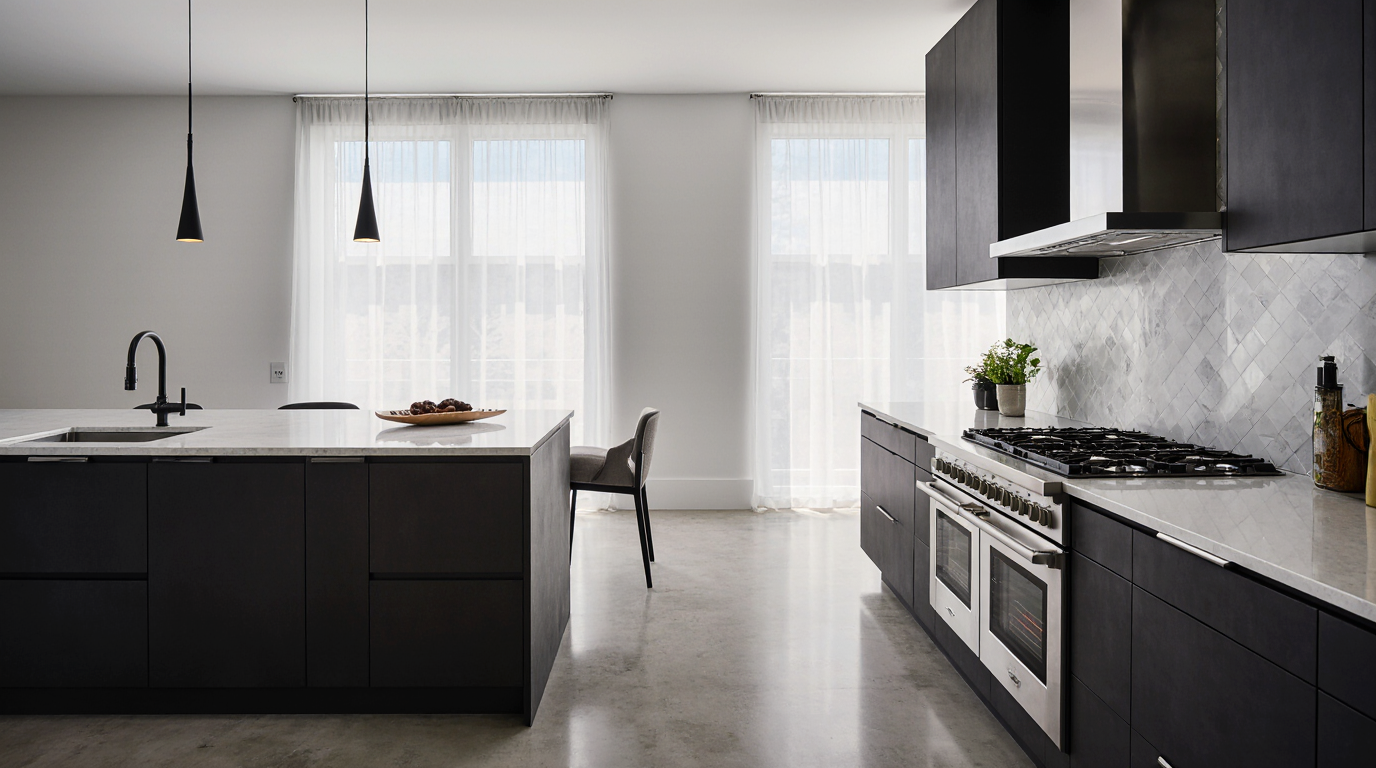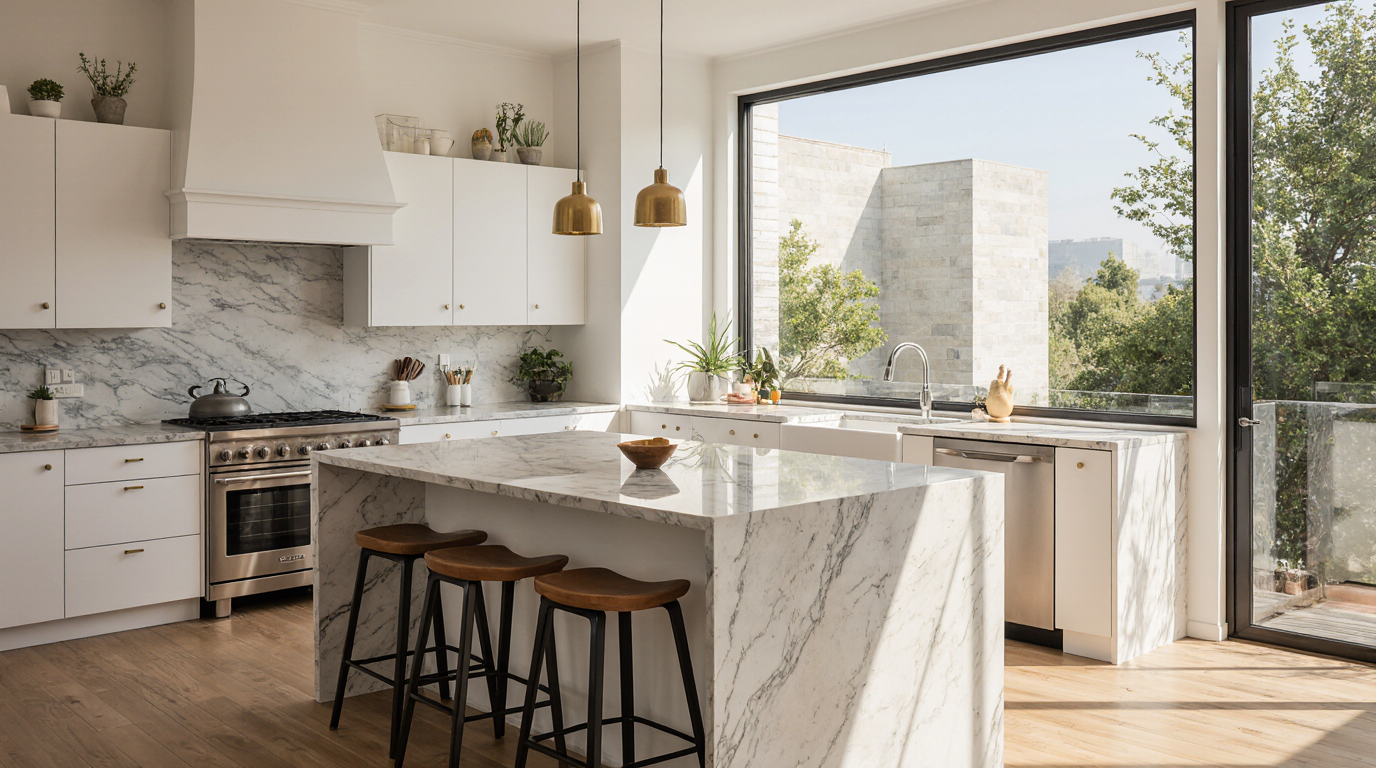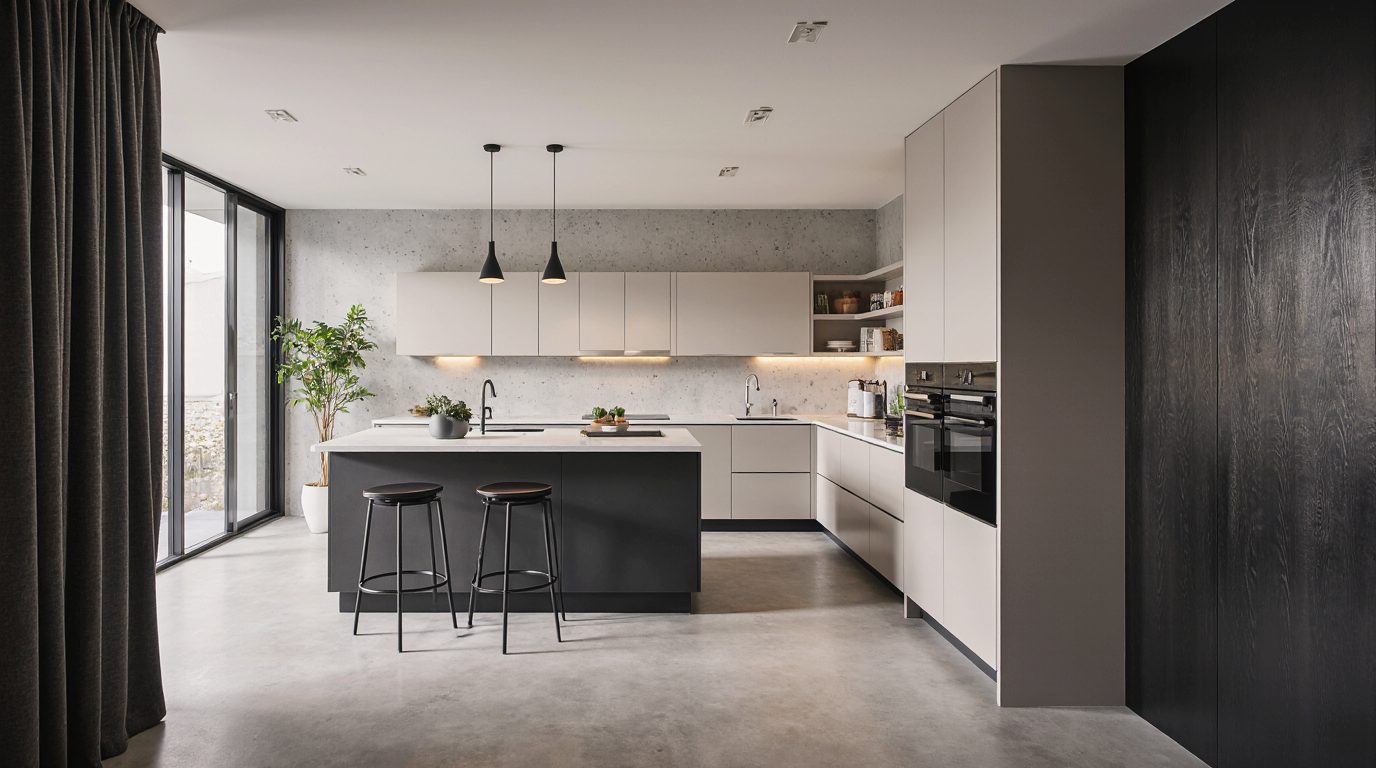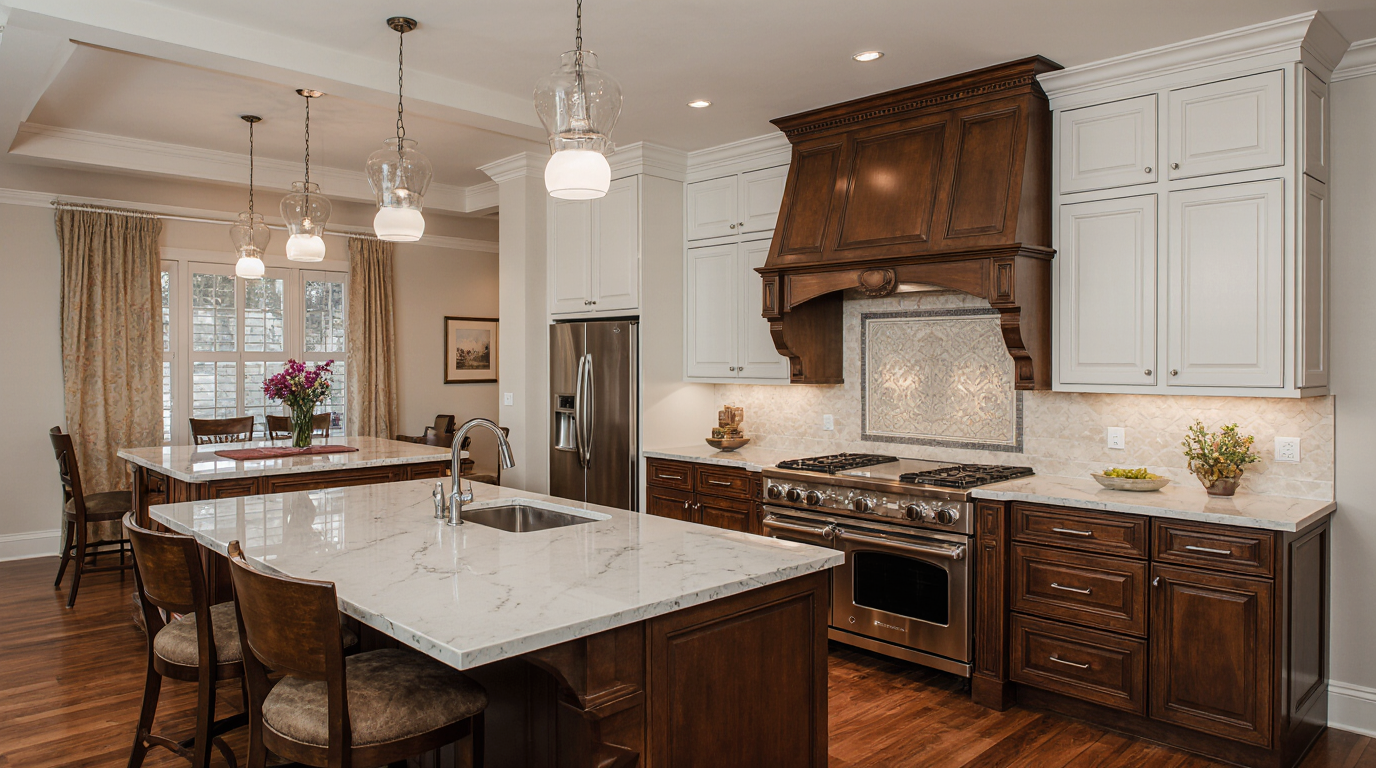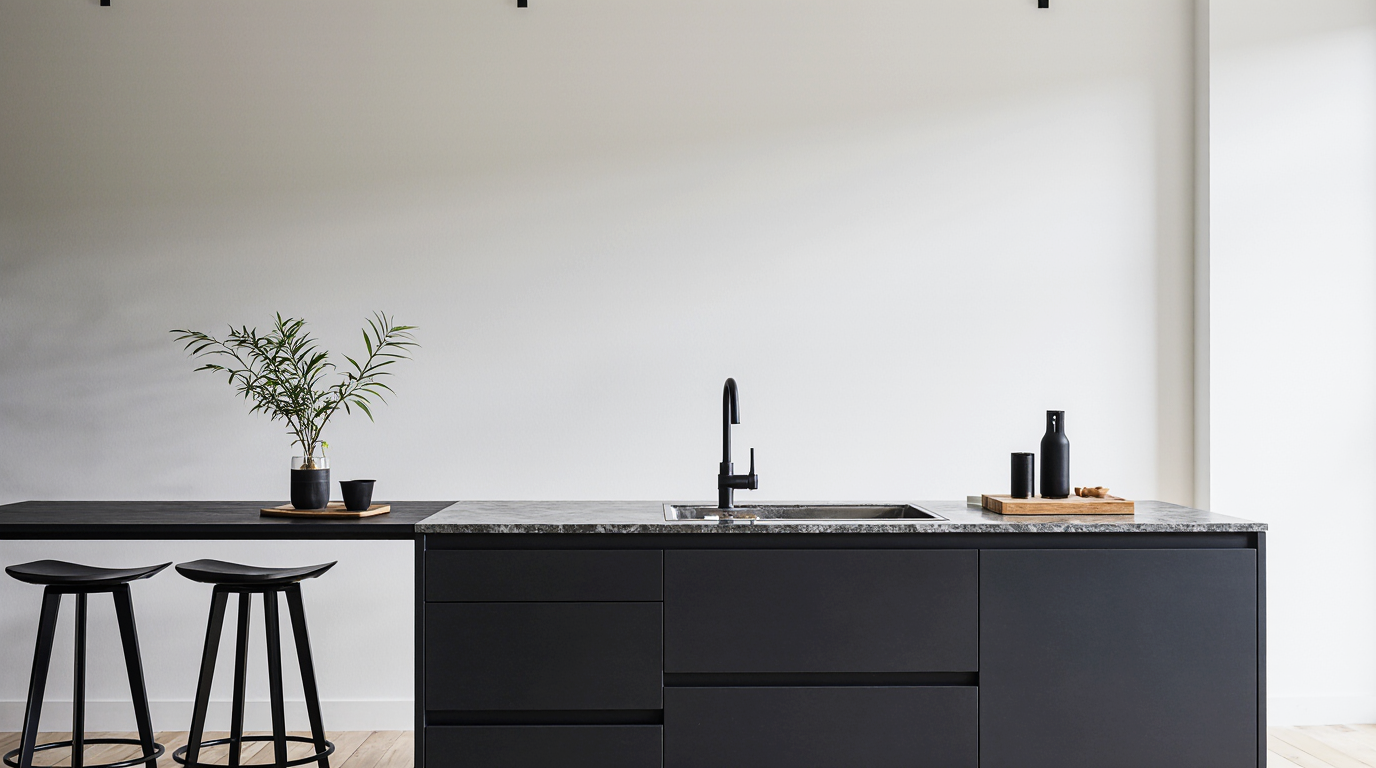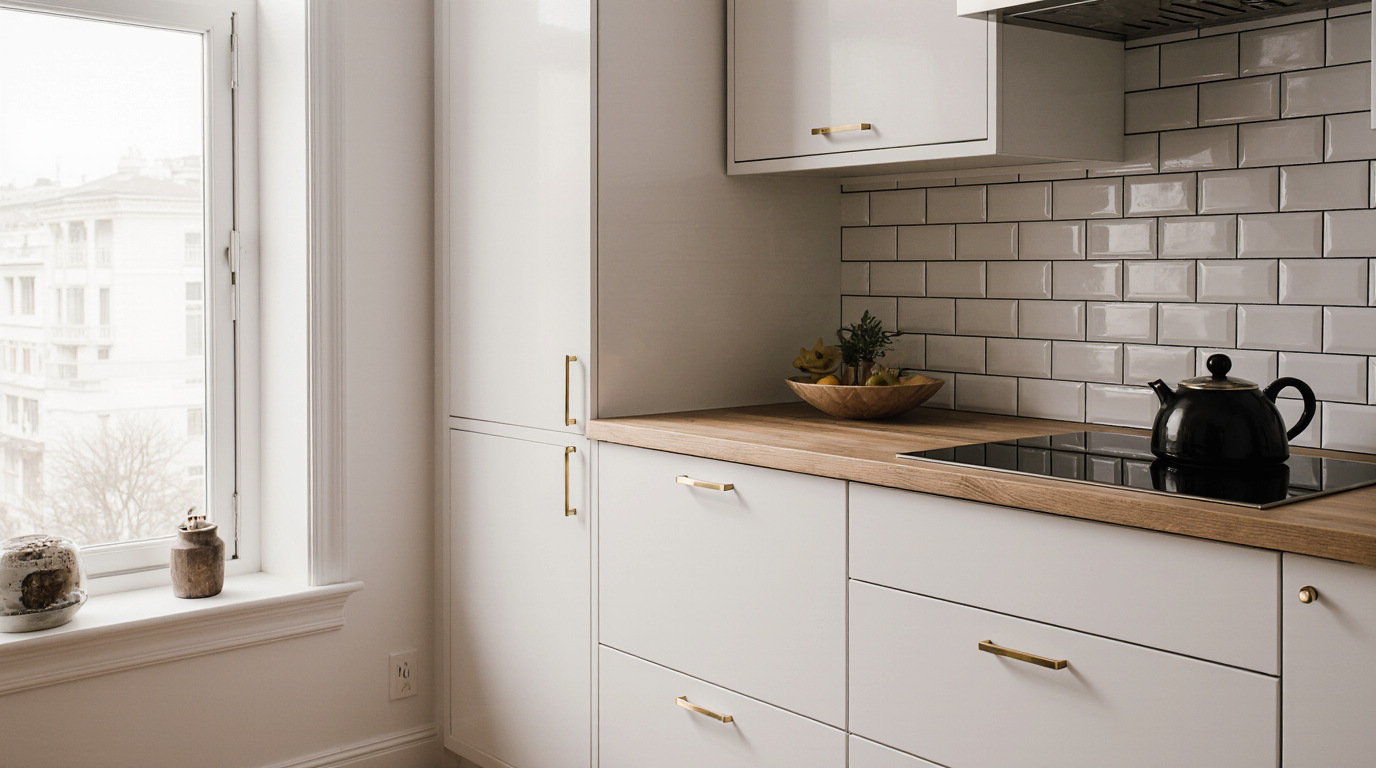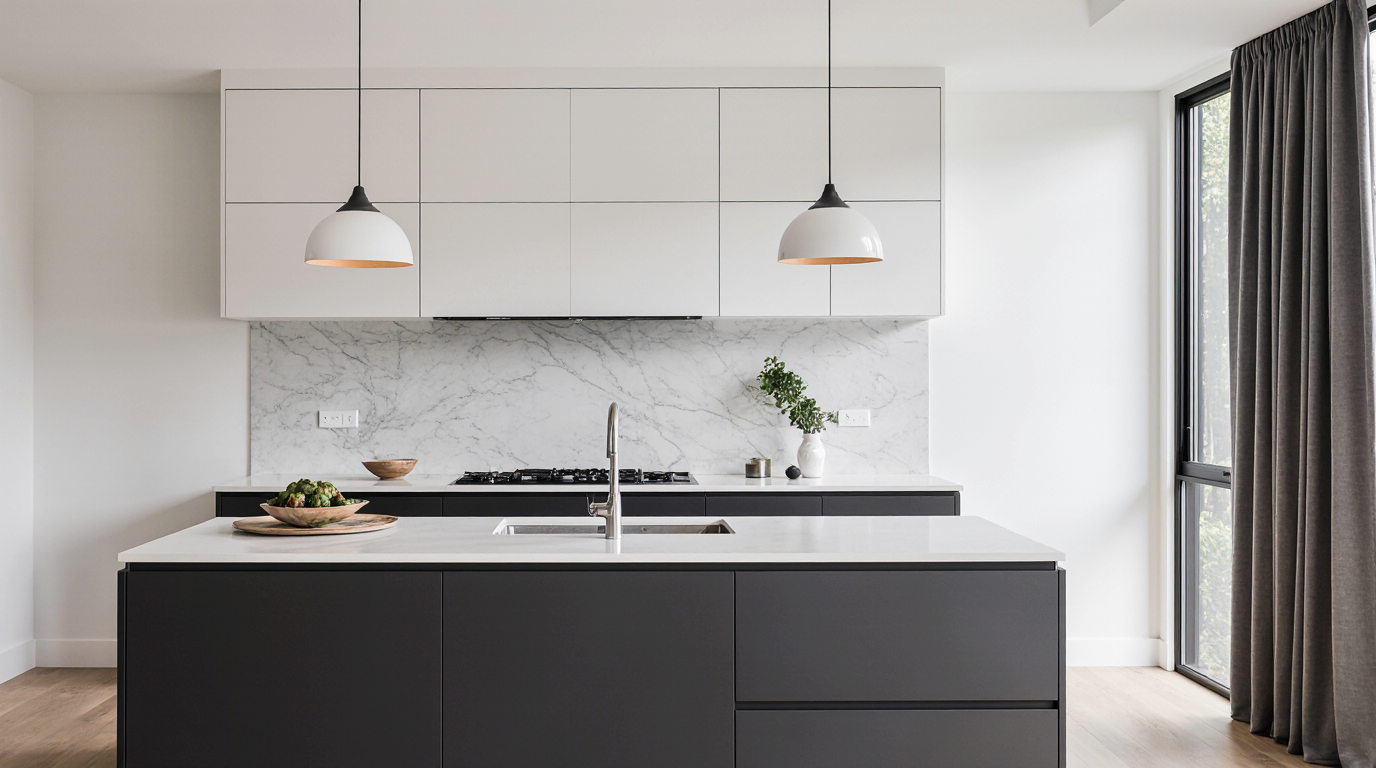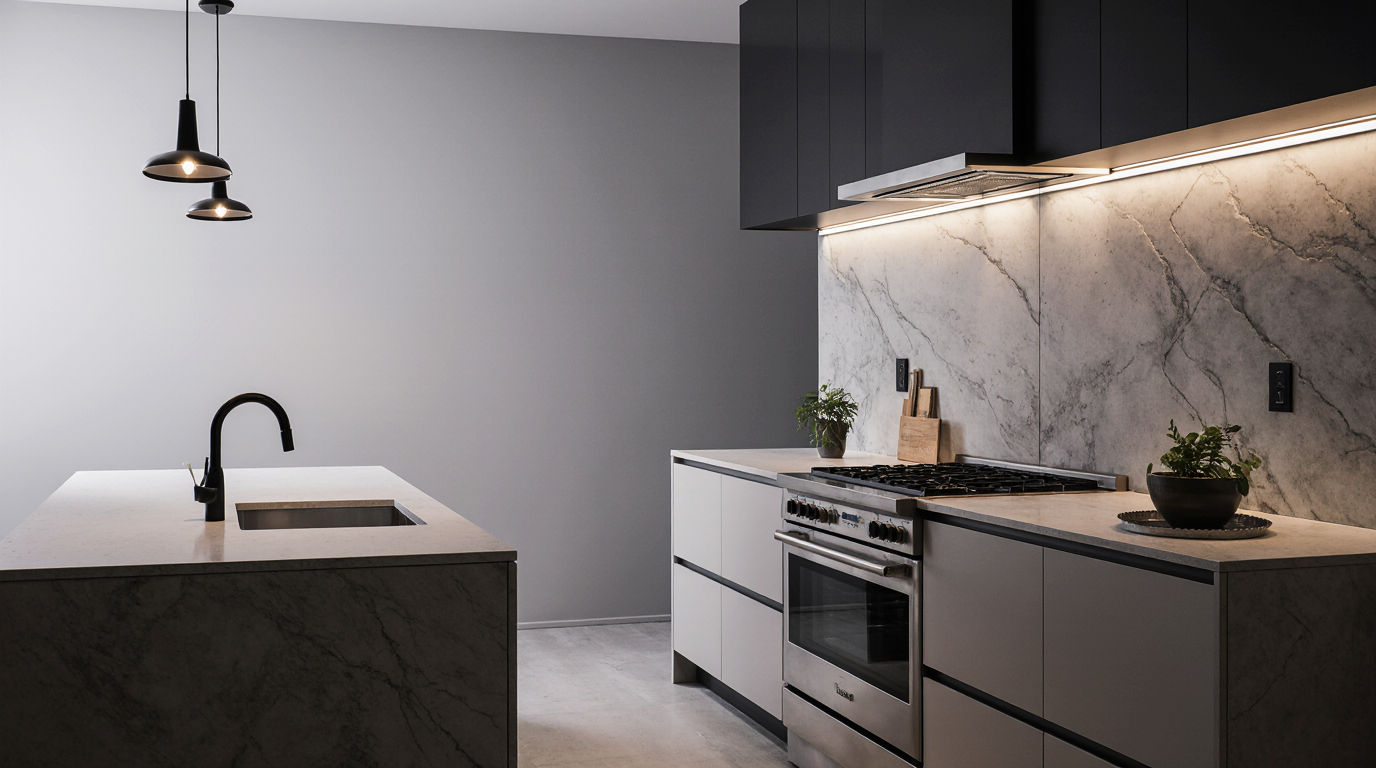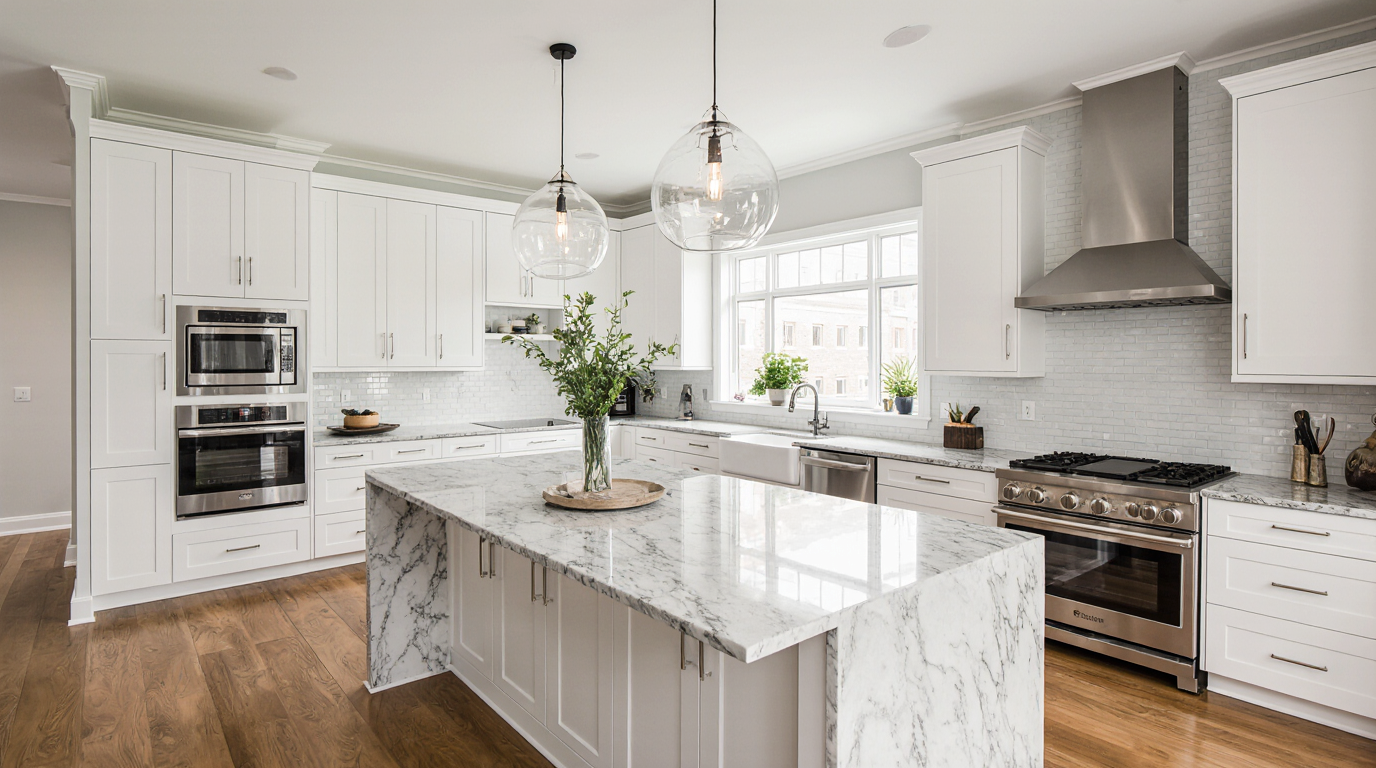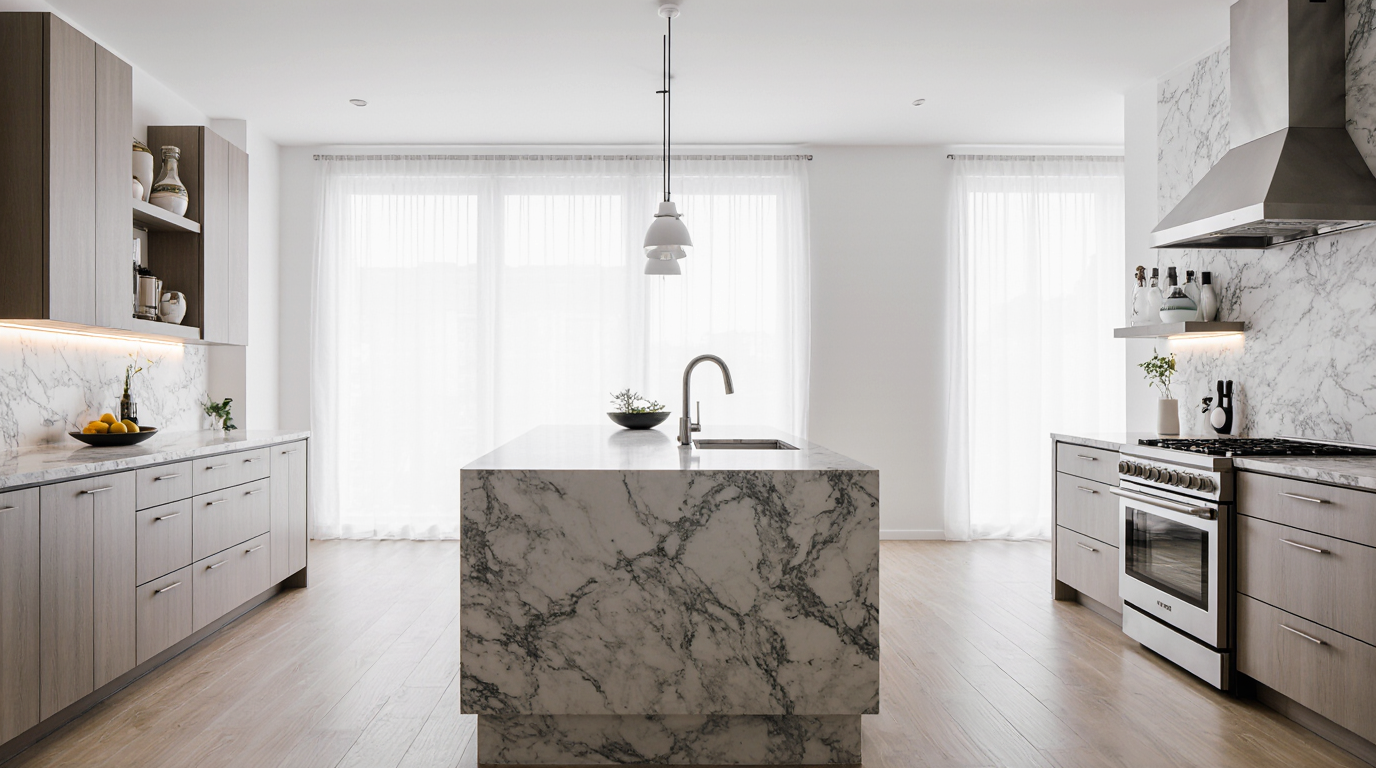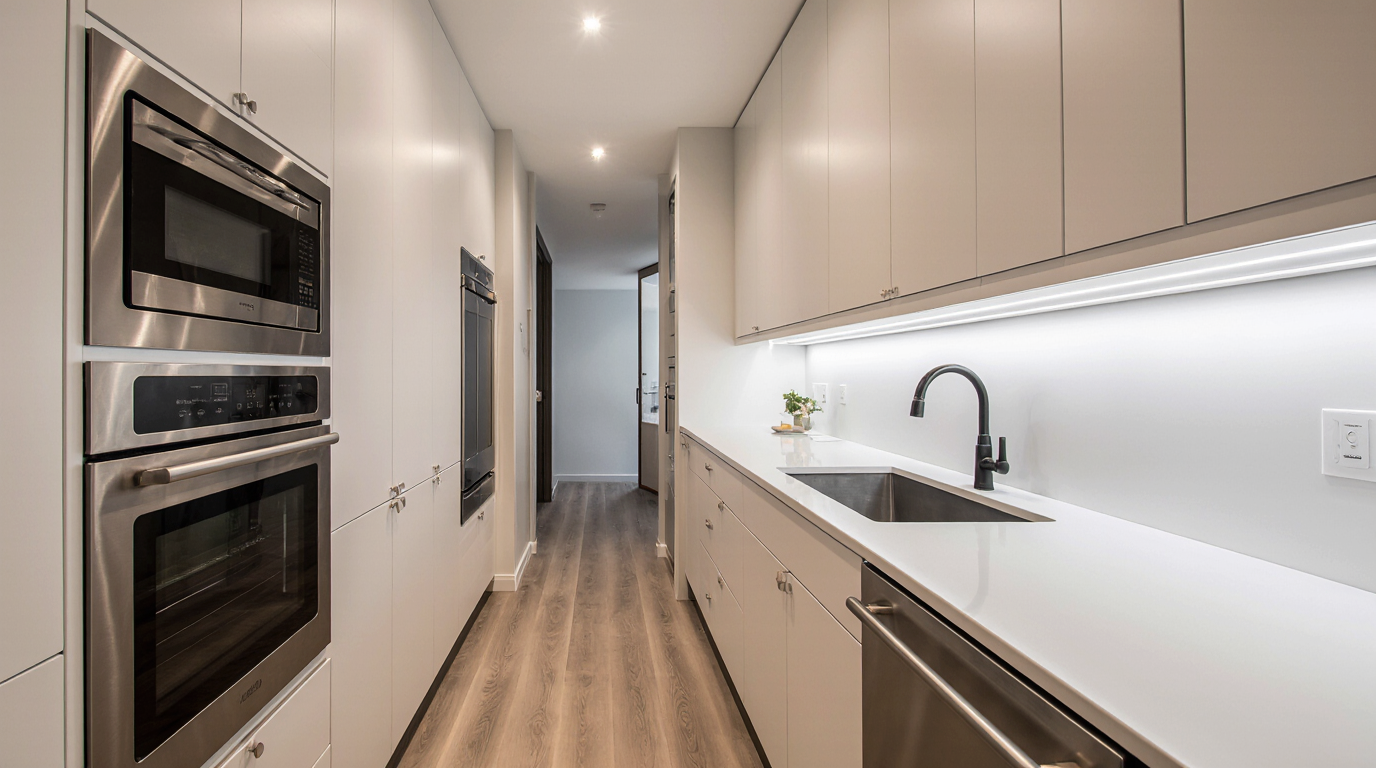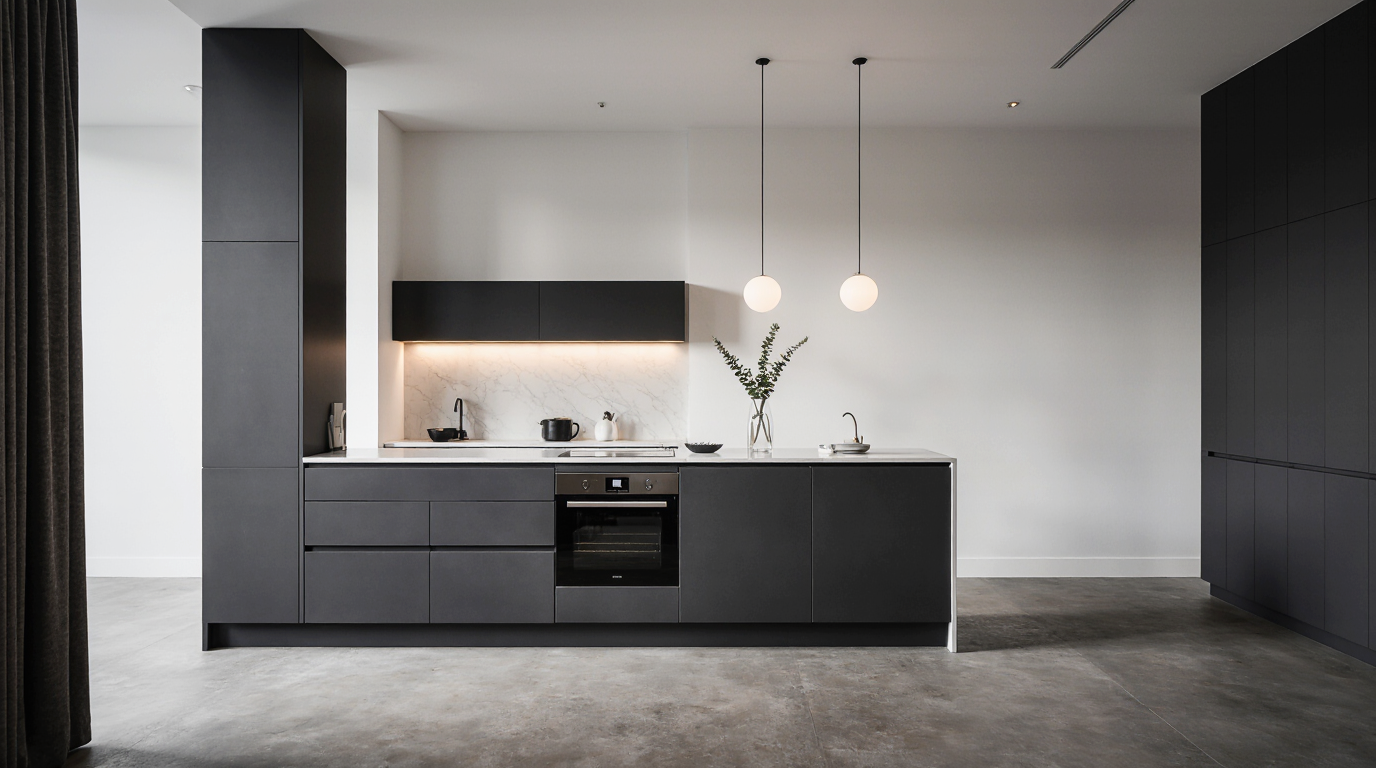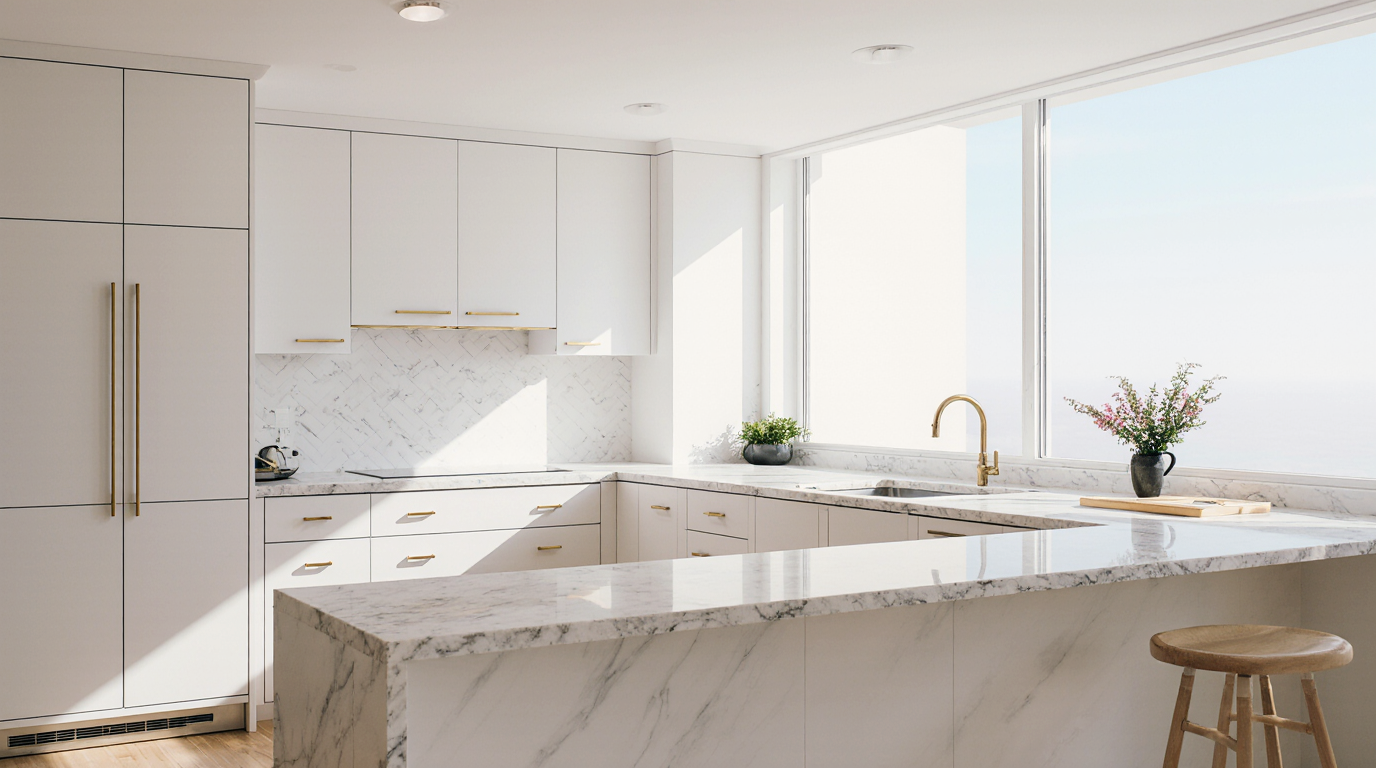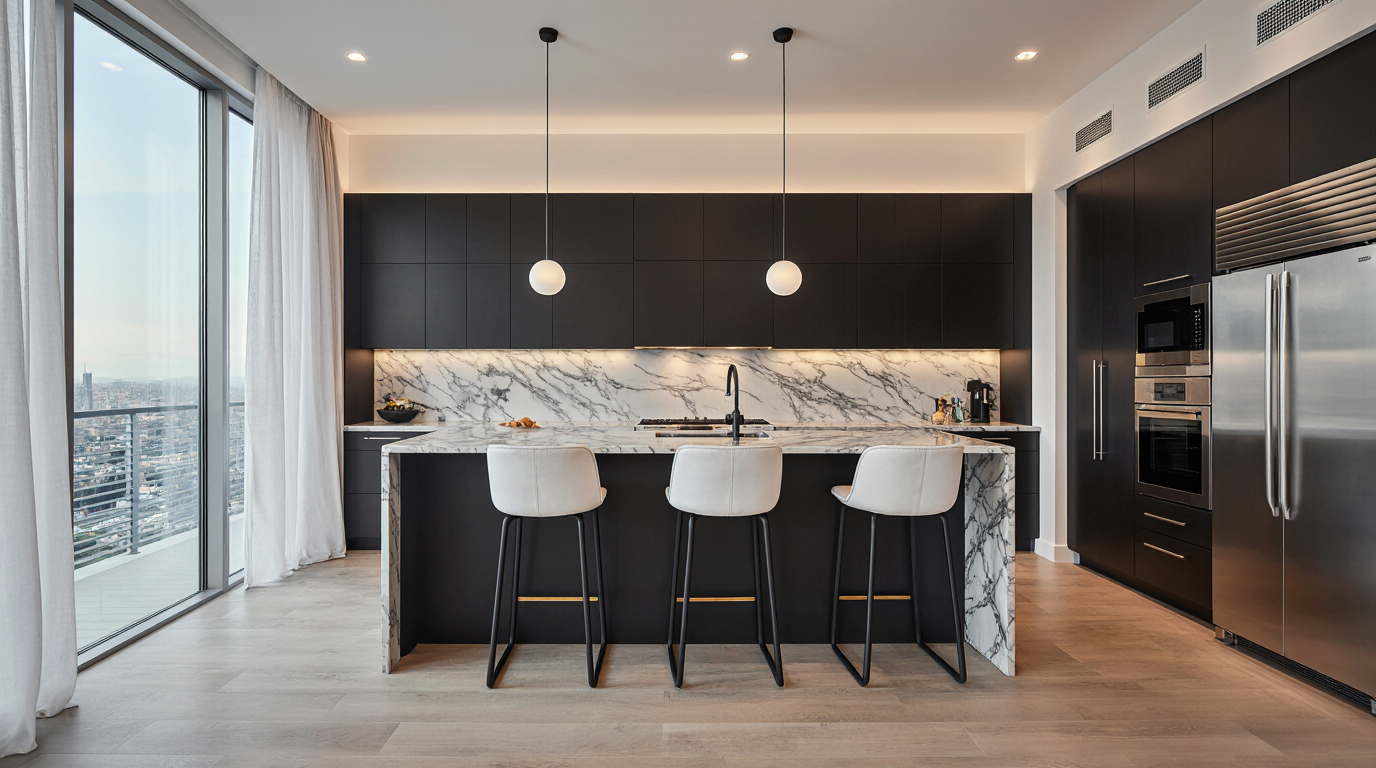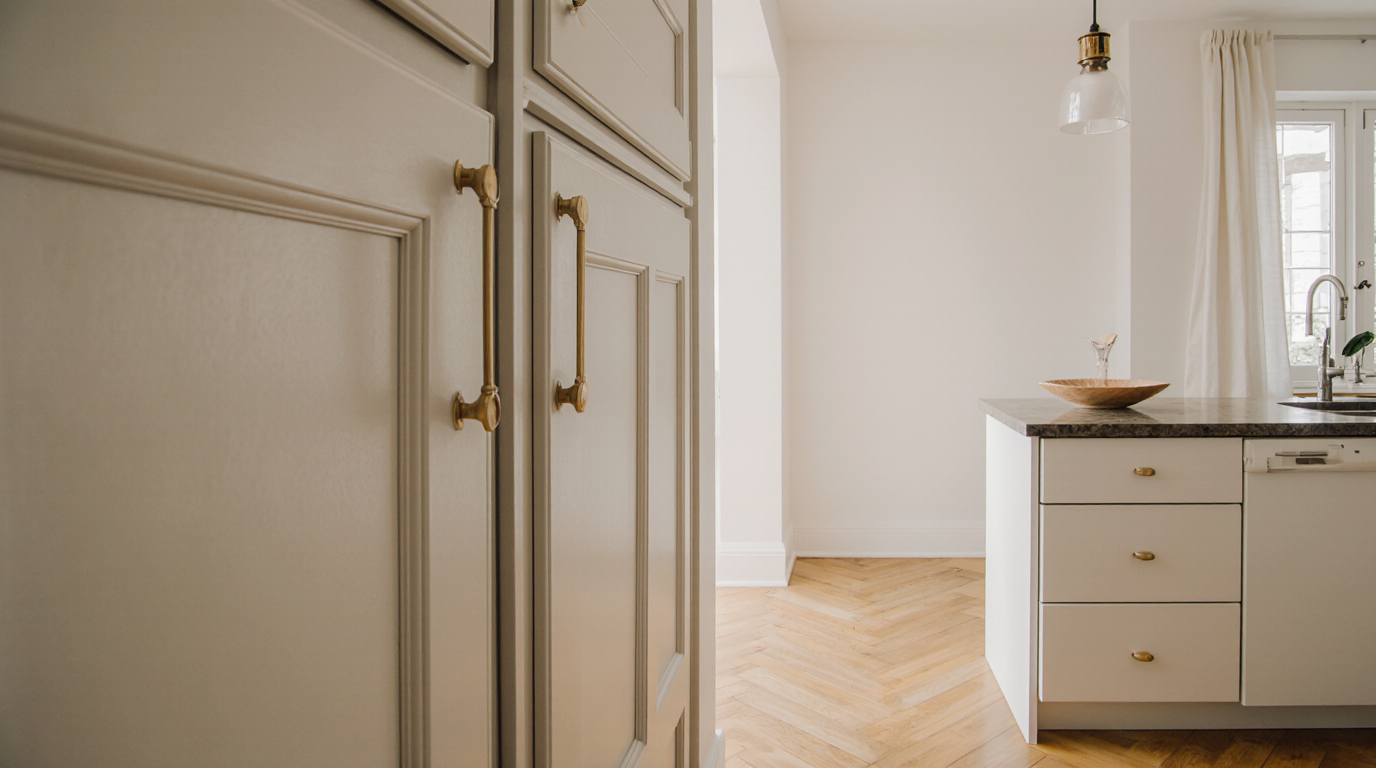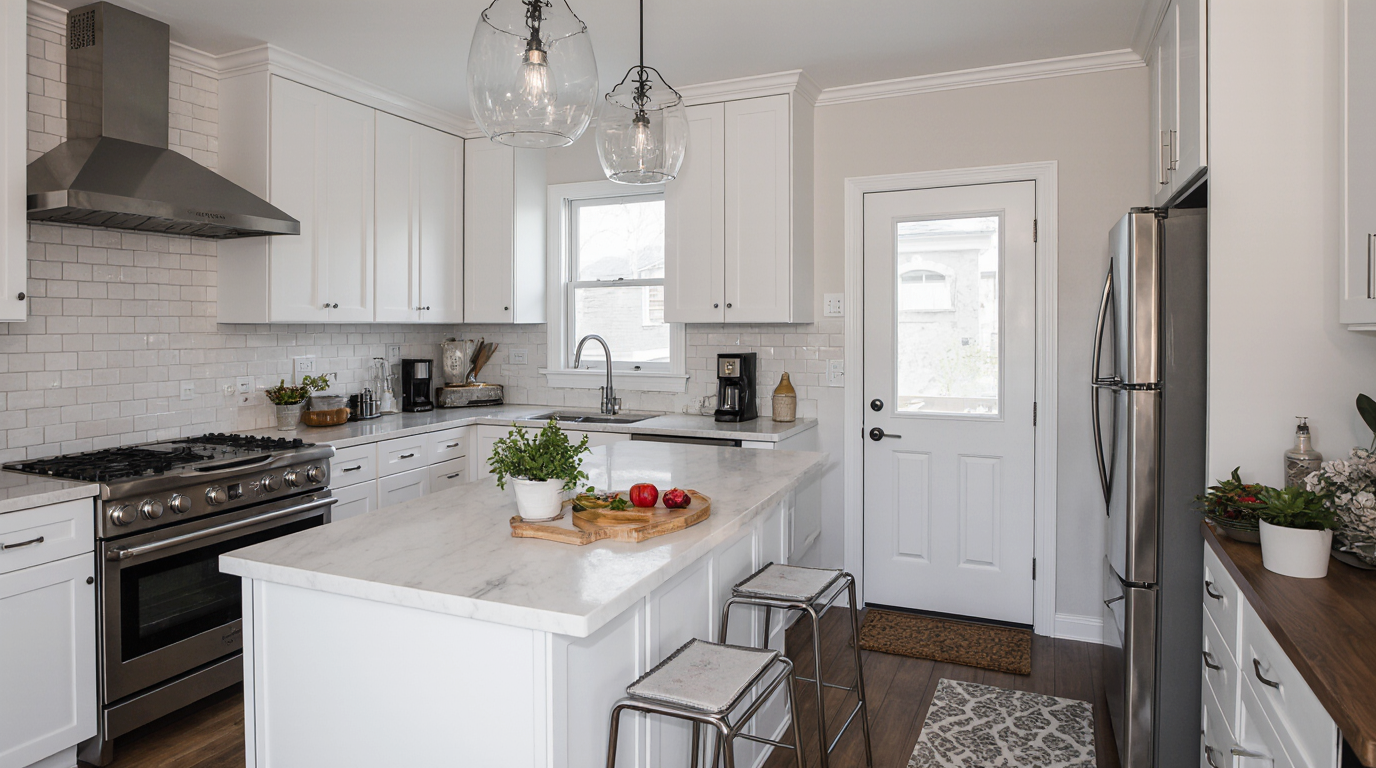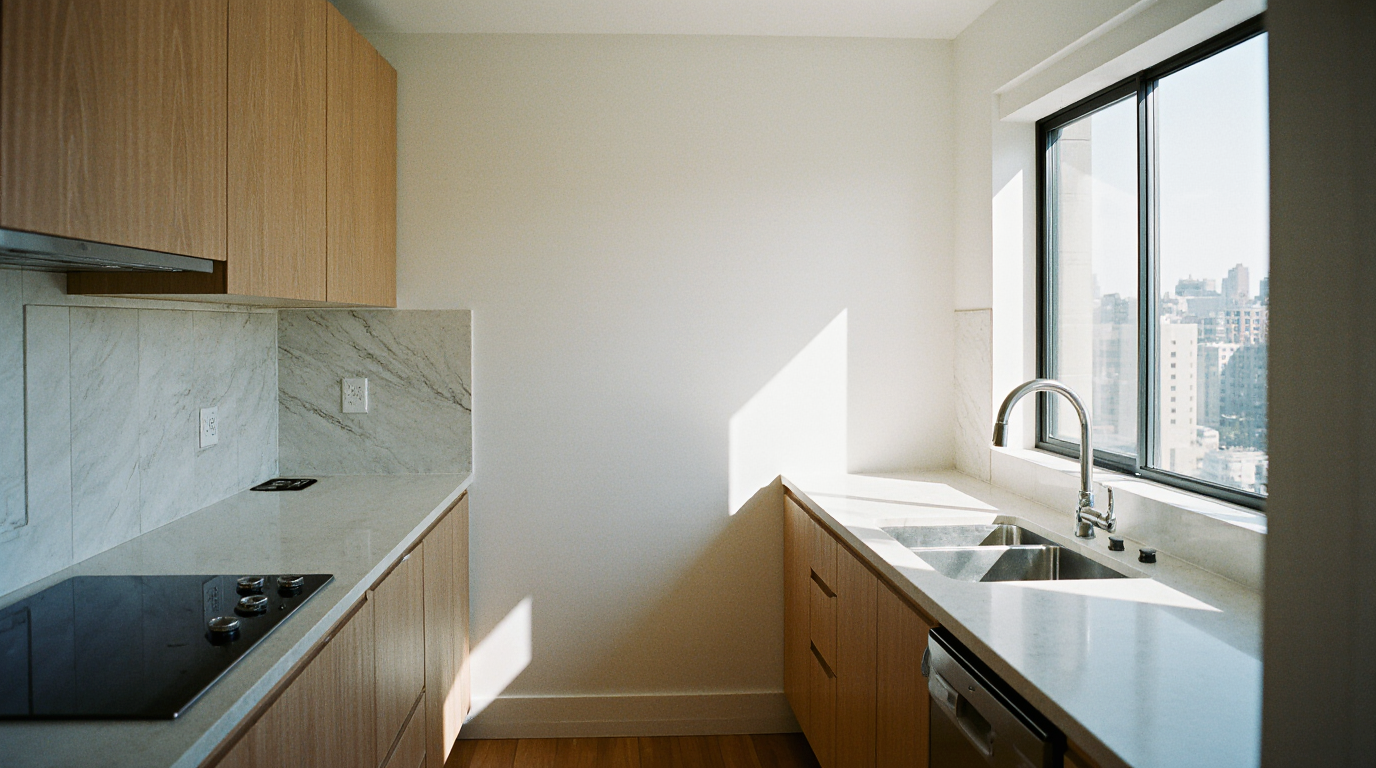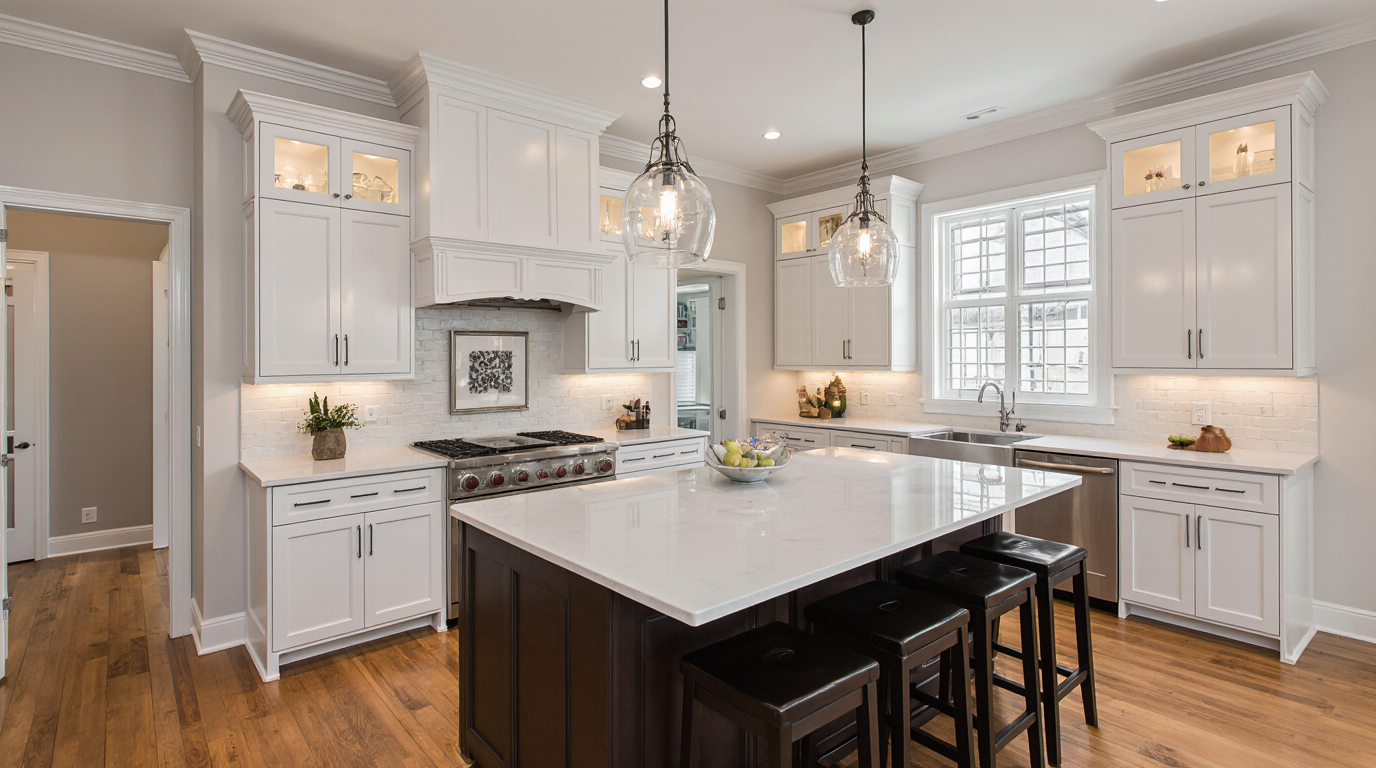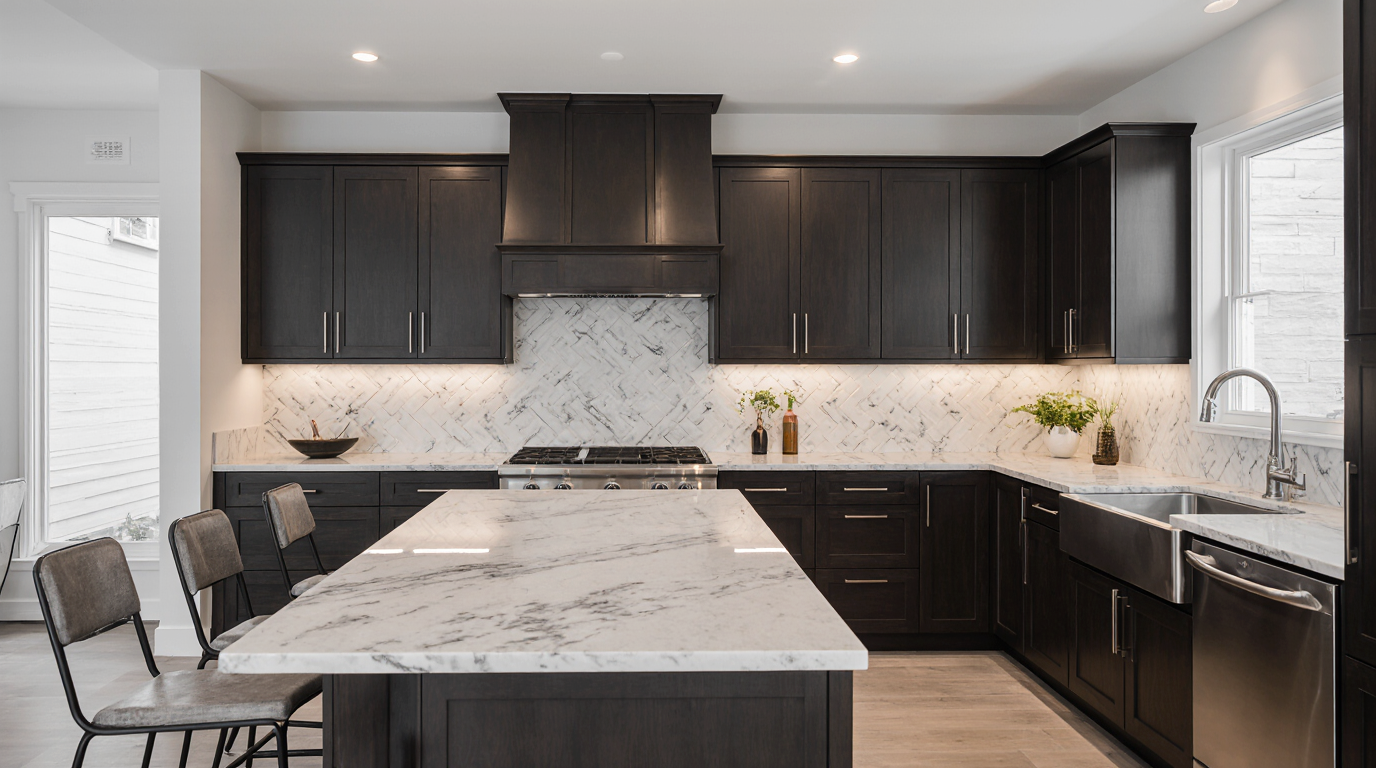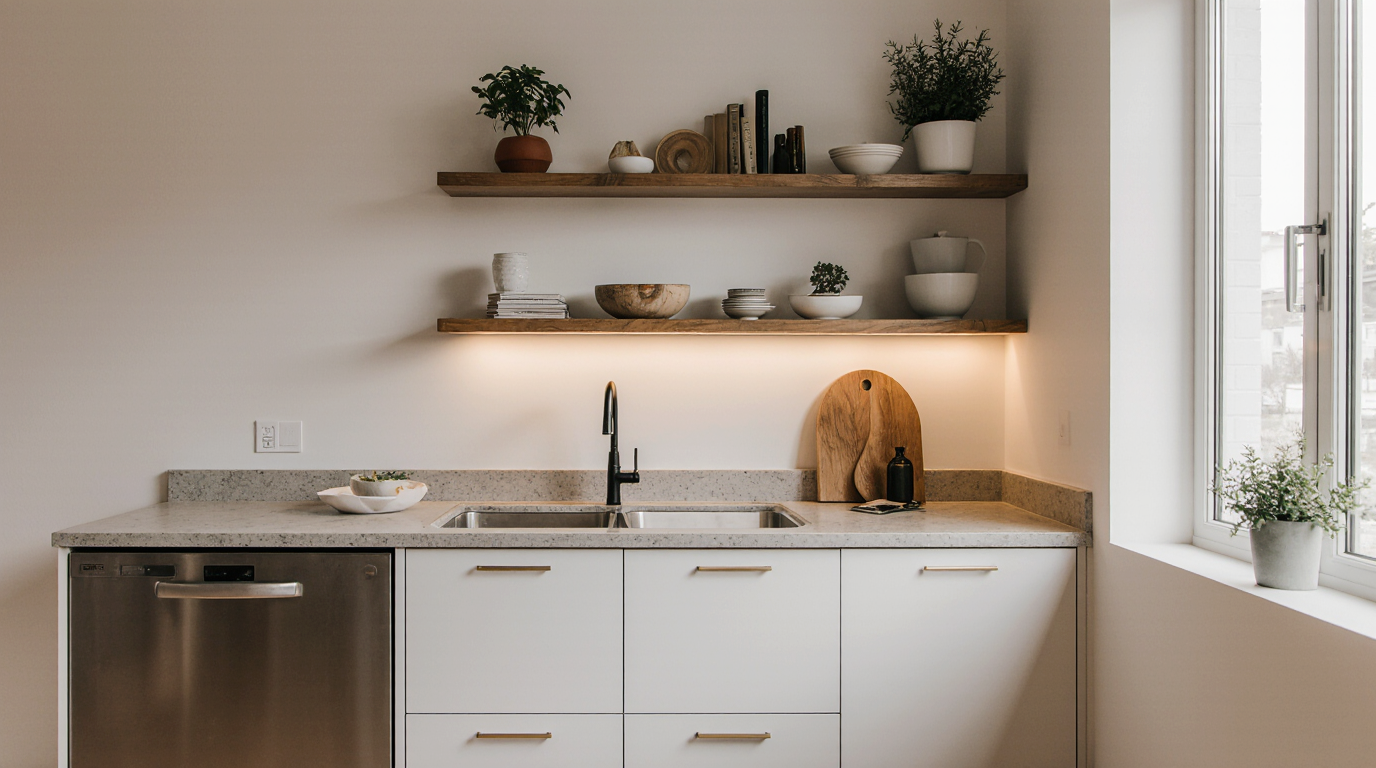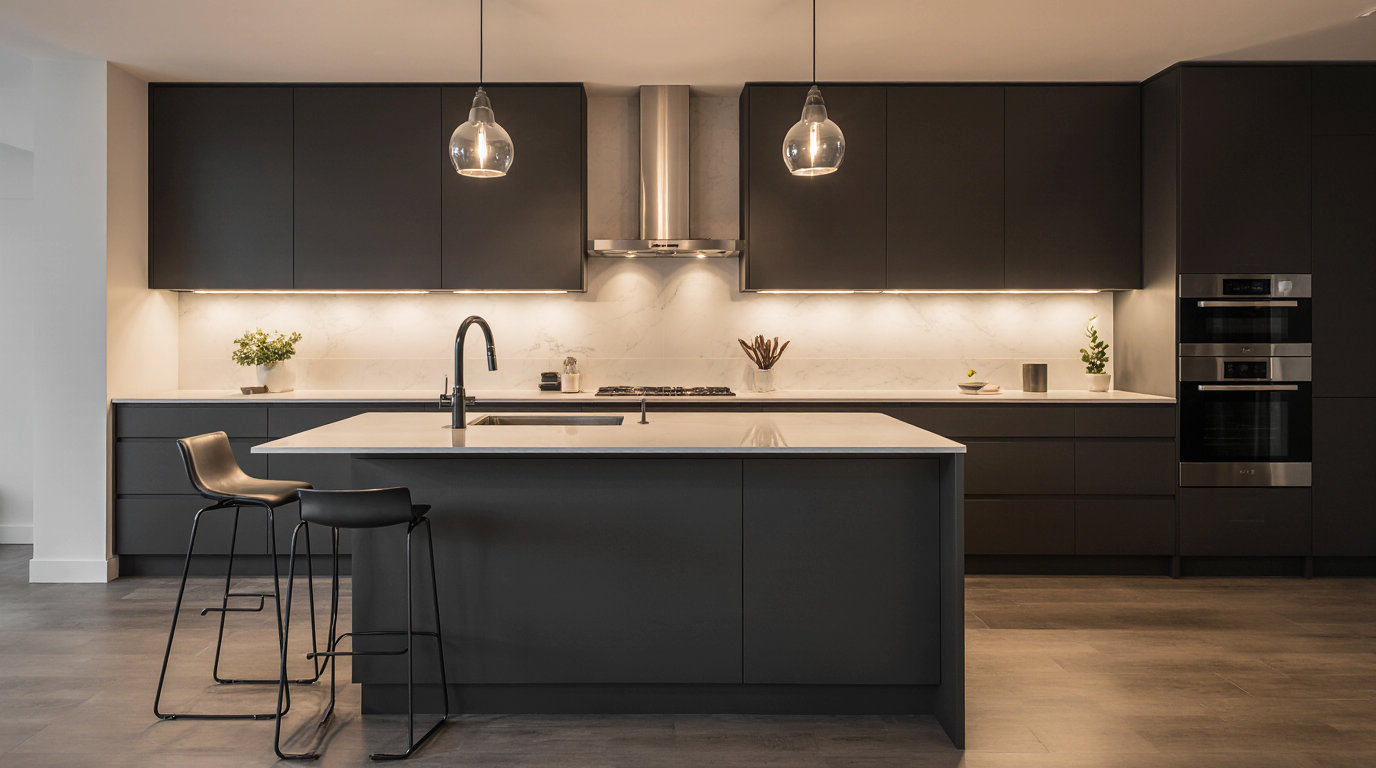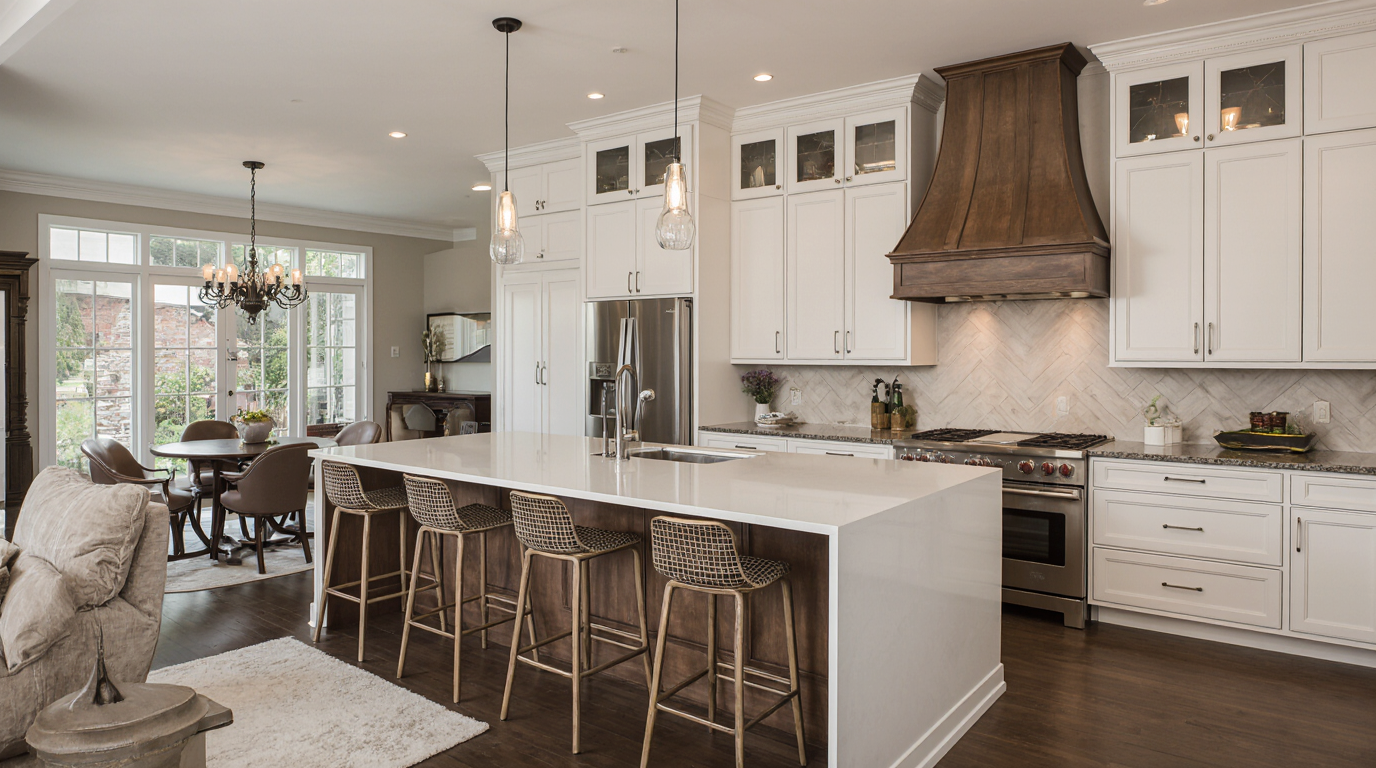Kitchen Renovation
A well-executed kitchen renovation transcends mere aesthetics; it's about crafting a perfectly organized space that precisely matches with your daily routine. Before placing an order, a detailed design consultation is paramount. Think about the kitchen layout – is the existing work triangle (stove, washing station, refrigerator) streamlined, or would a galley kitchen, L-shape, or perhaps a central kitchen island configuration more effectively address your meal prep and socializing requirements?
A well-executed kitchen renovation transcends mere aesthetics; it's about crafting a perfectly organized space that precisely matches with your daily routine. Before placing an order, a detailed design consultation is paramount. Think about the kitchen layout – is the existing work triangle (stove, washing station, refrigerator) streamlined, or would a galley kitchen, L-shape, or perhaps a central kitchen island configuration more effectively address your meal prep and socializing requirements?
Custom cabinetry is the cornerstone of bespoke design, allowing for ergonomic storage solutions like slide-out shelves and deep drawers, utilizing every single square inch. Prioritizing high-quality materials for countertops—such as resilient quartz, classic natural stone (like granite or marble), or sleek stainless steel—will guarantee durability and add significant resale value to your asset.
The specification of kitchen appliances is critical to both design and utility. Consider energy-efficient models and smart technology integration, which can streamline everything from cooking to inventory management. Lighting design is another critical element, often underestimated by homeowners. A combination of ambient lighting (ceiling lights), task lighting (focused illumination for prepping), and accent lighting (to highlight features) establishes a harmonious, warm atmosphere. Determining the right backsplash material provides an opportunity for a bold design statement, from subway tiles to detailed mosaic patterns or large-format materials. Remember that proper ventilation is necessary to maintaining air quality and protecting your new investment from moisture and grease. A meticulously outlined renovation timeline and a certified kitchen design specialist are the key ingredients for actualizing your vision into a dream kitchen—a space that is both aesthetically pleasing and a true heart of the home. This detailed approach guarantees the perfect balance of form and function in your newly revitalized space.
Cheap Kitchen RenovationsStarting a kitchen makeover doesn't have to mean depleting your bank account, and the "Cheap Kitchen Renovations " approach demonstrates that beautiful, practical improvements are fully achievable without overspending. The first key action is smart pre-planning and prioritizing affordable modifications that make a big difference. Instead of getting a complete cabinet overhaul, consider the dramatic effect of new cabinet color or simply replacing existing fixtures with stylish new pulls. These easy aesthetic fixes dramatically change the room's feel, giving it a custom look without the expense of a full tear-out. Furthermore, explore affordable options for your counters, such as faux-granite contact paper or wood laminate, to achieve an upscale visual for much less money.
The secret to a low-cost makeover is effective homeowner labor. Projects like refreshing the tile area with easy stick-on options or adding new, more efficient illumination are often manageable for a determined homeowner and can be completed over a weekend. Lighting, in particular, is a major upgrade; adding under-cabinet LED strips brightens the workspace and makes the kitchen feel more modern and spacious. It is also important to make use of used goods stores and internet listings for slightly-used equipment or one-of-a-kind items that can be repurposed, like a vintage dresser converted into a charming kitchen island. By focusing on these visible but powerful modifications, you can conserve a significant amount of your renovation fund.
Another key component of the method is optimizing current square footage with clever storage rather than pricey major construction. Installing straightforward storage helpers—including spice racks, cabinet pull-outs, or drawer inserts—clears the work surfaces and makes cooking and prep much more efficient. This emphasis on functionality not only makes the kitchen more efficient but also gives the appearance of a more spacious, bespoke area. This mindful approach ensures that every dollar is spent on upgrades that truly boost the beauty and usability of the space.
Finally, remember that the final elements are what bring a cheap remodel to a successful close. A new application of color on the walls in a fashionable tone, some vibrant area rugs, and a few carefully selected decorative items can complete the transformation. The "Cheap Kitchen Renovations " philosophy is about demonstrating that ingenuity and resourcefulness matter more than a big budget. It allows people to design a space they adore, reflecting their personality and style, all while staying firmly within their financial comfort zone.
Complete Kitchen RenovationA Complete Kitchen Renovation signifies a full overhaul, where the whole area, from the layout and plumbing to the electrical systems and finishes, is reimagined to meet modern standards of efficiency and style. This deep-dive project usually starts with an extensive design and planning phase, where the homeowner partners with experts to define the new layout, ensuring best movement and adherence to the 'work triangle' concept for maximum functionality. This stage is critical, often involving 3D renderings to see the finished room and careful selection of all materials, from premium cupboards to durable, statement-making countertops.
The construction phase follows a systematic and often disruptive schedule, starting with the complete demolition and removal of all old fittings. Once the room is completely cleared, the process moves into the 'rough-in' stage, where electrical wiring and new plumbing lines are installed to fit the new layout and appliances. This preparatory work is key for the lasting soundness and safety of the kitchen. Coordination among different professionals—carpenters, electricians, and plumbers—is critical during this period to ensure that all systems are correctly placed before the walls are sealed.
Next follows the installation of the main elements that establish the kitchen's aesthetic. Premium cabinets is installed first, forming the structural base for the whole space. Following this, the major appliances and the chosen flooring material—whether hardwood, tile, or stone—are put into place. Countertop installation is a key milestone, particularly for materials like granite or quartz, which often require exact, custom fabrication. These installations require meticulous attention to detail as they are the fixed elements that anchor the design.
The final stage, often referred to as the 'finish work' or 'second fix,' is where the project truly comes to life. This includes the backsplash installation, completing all electrical connections, mounting the light fixtures, and installing the new sink and faucet. Small but significant details, such as paint, cabinet hardware, and trim work, are completed, giving the space its polished appearance. A Complete Kitchen Renovation is beyond a simple upgrade; it is a long-term investment that dramatically increases the home's value, functionality, and aesthetic appeal, creating a perfectly tailored cooking and living area.
Small Kitchen RedoThe "Small Kitchen Redo " is a specialized approach focused on transforming compact culinary spaces into areas that feel significantly larger, brighter, and more functional. The primary design challenge in a small kitchen is combating visual clutter and maximizing every available square inch. Consequently, the renovation process must focus on design elements that encourage an expansive, light atmosphere. This includes using light-colored palettes for cabinets and walls, as lighter colors reflect more light, causing the space to look bigger. High-gloss or simple, flat-panel cabinet doors are often favored to minimize shadows and visual breaks.
Vertical space utilization is the next critical element of the small-scale remodel. Instead of standard-height wall cabinets, the strategy encourages installing cabinets that extend to the ceiling. This provides valuable, deep storage for less-used items and draws the eye upward, creating an illusion of height. Furthermore, homeowners should integrate clever, space-saving mechanisms such as pull-out pantries, revolving corner units, and interior door racks to utilize every nook and cranny efficiently. Open shelving, though it demands tidiness, is a powerful alternative that eliminates heavy upper cupboards and interrupts the solid block of continuous cabinetry.
Smart appliance selection is equally critical for a successful small kitchen redo. It’s necessary to select sleek, miniature, or integrated units to maximize work surfaces and floor area. For example, opting for a narrow dishwasher or a compact oven can make a big difference. Hybrid equipment, for instance, a convection microwave, also minimizes the number of individual, dedicated devices. The goal is to streamline the necessary equipment to ensure the kitchen remains functional without feeling overcrowded.
Lastly, the final touches must be selected based on the room’s size. Utilizing a rolling kitchen island or cart offers a versatile work surface that can be tucked away when not in use, offering a dynamic workspace solution. Thoughtful lighting, particularly recessed ceiling lights and task lighting, is paramount to eliminating shadows and further brightening the space. A "Small Kitchen Redo " is about ingenious design, proving that a compact kitchen can be as efficient and stylish as its larger counterparts by meticulously planning the layout and storage to fit a busy modern lifestyle.
Redo Your KitchenThe concept "Redo Your Kitchen " is a broad mandate, encompassing updates including minor cosmetic updates to major structural changes, all geared toward achieving a customized and updated space. The process typically starts with a careful review of the existing kitchen’s flaws—determining what is outdated, inefficient, or simply no longer matching the homeowner's lifestyle. This diagnostic phase helps determine the scope of the "redo," whether it necessitates a major overhaul or a focused refresh centered on surface-level improvements.
For many homeowners, "redoing" the kitchen means focusing on the elements that offer the biggest visual ROI. Painting tired cabinets, often the most prominent feature in the room, is a popular and relatively inexpensive project that can dramatically change the entire mood of the kitchen. Similarly, the installation of a fresh, appealing backsplash is a quick way to add texture, color, and a modern touch. The strategy emphasizes that a "redo" doesn't have to be complex; sometimes, a change in color scheme and new fixtures is all it takes to feel like a brand new space.
The philosophy also prompts homeowners to view the "redo" as an opportunity to modernize appliances and fixtures, which can enhance efficiency. Replacing older appliances with upgraded, high-efficiency stainless steel models immediately elevates the kitchen's look simultaneously cutting utility costs. Upgrading a old tap to a modern pull-down model and installing a new, larger sink can greatly enhance the workspace functionality. These changes represent a thoughtful investment in both the aesthetic and the everyday usability of the kitchen.
Crucially, a "Redo Your Kitchen " should always tackle the overall movement and structure of the space. Even without changing the structural footprint, rethinking where items are stored—perhaps adding a dedicated coffee bar or optimizing a pantry area—can significantly better the cooking experience. The goal of this kind of renovation is to harmonize the space, making it a place where the family is happy to convene and create food. It is a tailored transformation aimed at aligning the kitchen with the unique demands and aesthetic preferences of the current occupants.
Cheap Kitchen Remodel Near MeThe "Affordable Kitchen Update Close By " focuses on local, cost-effective renovation solutions that tap into local assets and sensible, readily available changes to achieve a updated appearance. The concept is rooted in the idea of finding affordable professionals and materials in the immediate vicinity to reduce acquisition and hauling fees, making the overall project far more cost-effective. This process begins with sourcing local contractors, handymen, or even students from trade schools who may offer more favorable charges than larger, distant firms, all while guaranteeing the workmanship adheres to required criteria.
A key element of this close-by, inexpensive upgrade is prioritizing material sourcing from local outlets. This involves visiting local bargain home improvement centers, reclaimed component depots, or even local Facebook Marketplace groups for bargains on cupboards, work surfaces, and equipment. Often, homeowners can find excellent condition, second-hand, or obsolete materials at substantial savings. This does more than just lower the price but also assists neighborhood companies and lowers the carbon impact of the renovation.
The best, cost-aware renovations focus on striking surface alterations. Instead of expensive complete cupboard renewals, the money is more wisely allocated to expert repainting or re-skinning, which keeps the current framework while totally refreshing the outward look. A cheap remodel near you often entails updating the lighting, installing a contemporary, nearby-acquired splashback, and freshening the paint with a modern hue. These accessible projects are ideal for a local handyman or a confident DIYer, keeping labor costs to a minimum.
The "Near Me" component of "Cheap Kitchen Remodel Near Me " suggests an emphasis on ease of access and quick completion. Because the focus is on minor, non-load-bearing improvements, the kitchen is generally usable again fast, minimizing disruption to the household. By using ingenuity, hiring neighborhood specialists, and concentrating on visual enhancements like hardware swaps, fresh coloring, and affordable floor choices, homeowners can achieve a revitalized, updated culinary area that looks tailor-made without ever going over a set community spending limit.
Full Kitchen RemodelA complete kitchen renovation is a major project that totally changes the heart of your home. This process means gutting the room and restoring it with a fresh design, modernized electrical and plumbing, and current design features. This holistic method guarantees that all parts of the kitchen work optimally and satisfy the needs of modern life. Planning is the cornerstone of a successful full remodel, requiring careful consideration of workflow, storage needs, and the integration of new appliances.
Normally, a full kitchen overhaul involves changing the cupboards, benches, floor materials, and illumination. It is an opportunity to improve the overall flow and functionality, perhaps by opening the kitchen up to an adjacent living area for a more open-concept feel. Investing in high-quality, durable materials is crucial, as this level of renovation is designed to last for decades. Choices about finishes, such as the timber for the cupboards or the rock for the counters, will significantly impact the finished appearance and the total cost of the undertaking.
Furthermore, a complete renovation is the perfect time to incorporate smart home technology and energy-efficient appliances. Adding items such as induction stoves, connected fridges, and voice-controlled lighting can improve the kitchen's practicality and lower future energy expenses. The electrical and plumbing infrastructure often needs significant upgrades to support these modern amenities, which is why working with experienced, licensed professionals is non-negotiable for safety and compliance.
The undertaking, although gratifying, may be long and inconvenient, frequently lasting a few weeks to multiple months. Effective oversight is critical to maintaining the schedule and reducing disruption. Nevertheless, after it's finished, a complete kitchen renovation considerably boosts the property’s market price, attractiveness, and, above all, the owner’s experience. The result is a bespoke culinary space perfectly tailored to the family's needs and aesthetic preferences.
Renovate Your KitchenTo renovate your kitchen suggests a focused approach on modernizing and improving the existing space without necessarily undergoing a complete teardown. This strategy is often chosen when the kitchen's arrangement and major load-bearing components are workable, but the finishes, equipment, or overall style are outdated. It's a strategic compromise between a small facelift and a full-scale rebuild, offering a substantial impact with potentially less disruption and cost.
A typical kitchen renovation might focus on major aesthetic updates such as refacing or painting existing cabinets, swapping out counters, modernizing the backsplash, and installing new hardware. These surface-level modifications can transform the kitchen's look and feel, providing a contemporary look without the complexity of changing the structure or relocating utility lines. The selection of paint colors, textures, and materials is key to achieving the desired style transformation.
In addition to the look, renovation often includes crucial functional upgrades. This is the ideal time to replace older appliances for newer, energy-efficient models and to improve the lighting scheme. Installing under-cabinet lighting or modern hanging lights can make a huge difference in both task visibility and the room's atmosphere. In contrast to a complete rebuild, the focus remains on working within the current footprint, optimizing the existing structure for improved function.
The benefit of a focused renovation is the relatively shorter timeline and the potential for a higher return on investment (ROI) for the scale of the work performed. It allows homeowners to tackle their most urgent issues—whether it’s a dated look or broken equipment—in a simpler process. The end goal is to breathe new life into the heart of the home, creating a space that is both more enjoyable and better suited to the current homeowners' lifestyle.
Budget Kitchen RemodelA cost-effective kitchen renovation is a smart strategy to maximize visual appeal and functionality without overspending. You can achieve a gorgeous, highly functional kitchen without a huge budget—success is built on smart planning and choices. The primary objective is to make thoughtful, cost-effective upgrades that significantly elevate the aesthetic value of the area without requiring expensive structural changes.
The core of a budget remodel often revolves around revitalizing existing components rather than replacing them entirely. For example, painting or refinishing existing cabinets is far more economical than installing new custom units. Similarly, instead of high-end natural stone, you can opt for laminate or butcher block counters which provide excellent aesthetics for much less. These choices allow the homeowner to allocate a larger portion of the budget to a few key focal points.
Smart shopping for appliances and materials is critical to maintaining the budget. Looking for sale items, considering floor models, or choosing mid-range, yet still high-quality, products can lead to significant savings. Furthermore, doing a few tasks on your own for tasks like painting, simple demolition, or installing a new backsplash can dramatically reduce labor expenses, often the single highest cost of any remodel.
Effective budgeting also means prioritizing what truly needs an upgrade versus what is merely a want. It might involve keeping the current layout to avoid costly plumbing and electrical work. The ultimate aim is a refreshed and more functional kitchen that feels personalized and modern. This approach demonstrates that with imagination and careful control, a homeowner can achieve substantial improvements that elevate their living space without breaking the bank.
Kitchen Island RenovationA kitchen island renovation is a specific, high-impact project focused entirely on improving or installing the central fixture of the modern kitchen. The island is often the most used and most visible element in the room, serving as a multifunctional hub for meal prep, dining, working, and gathering. Therefore, renovating it is a powerful approach to breathe new life and functionality into the whole kitchen without requiring a complete renovation.
If an island already exists, the renovation might involve extending its size, updating the counter surface, or updating its storage configuration. A popular choice for homeowners is to integrate features like a prep sink, a dedicated microwave drawer, or a wine cooler to make it more useful. The choice of materials for the island countertop—often contrasting with the perimeter countertops—is a major design decision that can define the room's aesthetic.
For kitchens without an existing island, the renovation involves a significant planning phase to determine the appropriate size and placement, ensuring adequate clearance for traffic flow. This step often requires running new wiring to support power outlets and lighting, and sometimes adding plumbing for a sink or dishwasher. The construction must be well-built and well-integrated into the kitchen's complete aesthetic.
A renovated island also presents a unique opportunity to improve lighting, perhaps by installing statement pendant lights above it, which can become the main focus for the entire room. Ultimately, a kitchen island renovation is about maximizing the efficiency and social potential of the kitchen. It changes the area into a more inviting and dynamic area, making the island the true centerpiece of the home.
High End Kitchen Renovation CostFocusing on the "high end kitchen renovation cost" reveals the financial outlay needed for a luxury remodel, emphasizing impeccable quality, personalized design, and the integration of best-in-class appliances and finishes. This type of renovation is characterized by a close eye for detail, bespoke elements, and the use of premium finishes, resulting in a truly bespoke culinary environment.
Costs escalate in a high-end project due to several factors, chief among them being custom cabinetry, which is fitted perfectly to the space and the homeowner's needs, often featuring exotic woods or unique treatments. In addition, appliance choices gravitate toward high-performance or integrated luxury labels that provide excellent functionality and a unified appearance. The countertops usually feature unique or imported natural stone slabs, demanding high-level skill and installation.
A major part of the budget is dedicated to labor, since high-quality projects need expert laborers, specialized fitters, and usually a professional designer or architect for the oversight of the elaborate design. Complex installations, such as steam ovens, high-capacity ventilation, or tailored pantry solutions, require specialized expertise and more time, contributing to the overall expenditure.
The significant investment ultimately demonstrates a commitment to premium quality and a wish for a personal, unforgettable space. The project frequently involves architectural alterations to obtain the best possible arrangement, fitting unique lighting concepts, and incorporating the latest smart home systems. While the investment is substantial, the result is a stunning blend of design and function that significantly enhances the home's value and provides a luxurious, tailored experience for the homeowner.
Average Cost of Full Kitchen RemodelThe aspiration of a full kitchen remodel often begins with a critical question: what is the actual monetary outlay involved? The average cost of a complete kitchen remodel, researched and reported by , offers a benchmark, but this figure is highly nuanced. It encompasses everything from the gutting of the existing space to the installation of top-tier fixtures, custom cabinetry, and high-quality surfaces. Grasping this starting expense is crucial, as it establishes the extent of the overall plan, from minor layout changes to complete structural transformations.
's data suggests that a full, mid-range kitchen remodel can usually be situated in a considerable price category, showing the large number of choices required. This average cost is primarily driven by the cost of replacement cabinets, which often consumes the largest segment of the budget. Furthermore, installing new, environmentally friendly devices, installing new countertops (such as granite or quartz), and updating flooring and lighting all increase the expense considerably. The area where you live is another significant price determinant, with metropolitan areas frequently reporting significantly higher averages for both materials and skilled labor.
Crucially, the 'full' designation means that almost everything in the space will be swapped out. Unlike minor updates, a full remodel monitored by often includes moving the room’s configuration, which adds expenses for wiring and pipe systems. Moving a sink or oven, such as relocating a key appliance, requires professional tradespeople, boosting the funds needed for contractor services. Homeowners need to account for unexpected costs, which strongly advises should be around 10-15% of the total estimate, to cover surprises like corroded pipes or structural defects discovered during demolition.
For homeowners leveraging ’s insights, the key is to perceive the outlay as a venture, not just a charge. A full kitchen remodel generally provides a significant ROI when the house is sold, although this varies based on the quality of materials chosen. Opting for long-lasting, classic materials, which can offer guidance on obtaining, often maximizes this ROI. Ultimately, the average cost provides a robust starting point, enabling homeowners to align their design dreams with their financial realities and plan a remodel that is both beautiful and fiscally sound.
Small Kitchen Remodels on a BudgetRemodeling a small kitchen on a tight budget can be a challenge, yet emphasizes that impressive results are fully possible without draining your savings. The inherent advantage of a smaller space is the lower volume of materials required, naturally cutting expenses on materials like countertops, cabinetry, and flooring when contrasted with a spacious kitchen. The focus shifts from sheer size to smart design decisions and careful use of limited funds, a process guides homeowners through with detailed budgeting tips.
The cornerstone of a budget-conscious small kitchen remodel, as highlights, often lies in creative updates rather than full replacements. A better option than purchasing new cabinetry, homeowners can choose to reface or simply paint existing ones, dramatically altering the kitchen's aesthetic for a fraction of the cost. Similarly, installing new cabinet hardware (knobs and pulls) can provide a surprisingly impactful visual refresh. suggests focusing on the most visually effective zones, such as a modern tile backsplash or an eye-catching lamp, as focal points that take focus off the less-updated parts.
Furthermore, a vital recommendation from involves maintaining the original configuration. The moment you relocate the wiring or pipes, the labor costs increase dramatically due to the requirement for expert professionals. Keeping the "kitchen work triangle" (sink, stove, refrigerator) in its current position is the single most effective way to stay within budget for a minor remodel. Any changes should be limited and centered on utilizing wall height to make the most of the restricted space.
Utilizing the vendors connected to can also result in significant discounts. By selecting mid-range or quality stock materials—such as pre-made laminate counters or conventional floor tiles—instead of custom or luxury options, the budget remains intact. Finally, encourages a personal labor investment for particular parts, such as removing old materials, applying paint, or laying tile, where the homeowner’s labor can directly equate to major financial benefits, thereby proving that a deliberate and expertly planned minor renovation can be both cost-effective and refreshing.
Kitchen and RemodelingThe term "Kitchen and Remodeling " encapsulates the entire process of upgrading one of the most vital rooms in any home, from simple enhancements to major, in-depth renovations. A kitchen remodel is often the highest-value renovation a homeowner performs, driven by a desire for better utility, improved design, and increased property value. is a detailed platform, simplifying the complex choice architecture that defines a successful project, making certain the final outcome meets both practical needs and individual design tastes.
Remodeling a kitchen is not the same as merely decorating it; it involves a critical balance of design, engineering, and construction trades. Key considerations, as highlighted by , include optimizing the workflow (the classic "work triangle" or updated "zone" concept), choosing hard-wearing and suitable finishes for high-traffic areas, and adding connected features. The scope of remodeling can vary dramatically, ranging from a simple material swap—like new countertops and a fresh coat of paint—to a total redesign involving wall removals, utility relocations, and revised framing.
focuses heavily on the planning phase, which is undoubtedly the most critical component of any remodel. This involves setting a realistic budget, approving a comprehensive blueprint, and carefully vetting contractors. Poor planning can lead to setbacks, unexpected costs, and a finished product that is disappointing. Utilizing ’s tools, homeowners can visualize their design, get precise material estimates, and create a calendar that minimizes disruption to their daily lives during the construction period.
Beyond the practical elements, a kitchen remodel is a highly individualized project. The new space must reflect the homeowner's lifestyle—whether it's an gourmet enthusiast requiring professional-grade appliances, a large family needing an open-plan eating area, or a person who likes simplicity seeking simple design. provides a curated selection of styles and materials, from modern European designs to charming country styles, helping homeowners turn their idea into a tangible blueprint. Ultimately, the partnership between the concept of "Kitchen and Remodeling" and 's platform streamlines complexity into a structured and fulfilling home improvement experience.
Small Kitchen Renovation CostThe particular monetary question of "Small Kitchen Renovation Cost " serves as a frequent starting point for many householders who aim to modernize their area in an efficient manner. A renovation, based on 's figures, typically implies restoring or refreshing the existing kitchen without major structural changes, making it a more affordable option than a full remodel. Knowing the cost distribution is vital for establishing practical expectations and maximizing the impact of every dollar spent in a smaller area.
The cost analysis provided by shows that small kitchen renovations usually are categorized in a less expensive bracket than major projects because the main cost associated with relocating walls or utility services is frequently bypassed. The cost is chiefly influenced by three main factors: material selection, the extent of professional labor hired, and the size of the kitchen in square footage. While less material is needed for a small space, choosing high-end finishes, such as premium imported tile or custom light fixtures, can quickly push the total cost toward the upper limit of the range.
A major expense that users must scrutinize is cabinetry. For a renovation, the most budget-friendly strategy involves retaining the current cabinet frames and opt to re-veneer or repaint the cabinet fronts. A complete substitution of all cabinets, even in a small kitchen, will constitute the biggest individual boost to the expense. advises that if cabinets are in good structural condition, a surface refreshment offers the best value for the renovation investment. Similarly, choosing an appealing but economical surface material for the counter, like butcher block or a standard-level granite, assists in keeping the expenditure under control.
Furthermore, highlights the benefit of targeted upgrades. A small renovation budget can be wisely allocated to prominently noticeable features like a modern sink, a fresh tap, or a fashionable backsplash. These updates offer a fresh, modern look without the cost and upheaval of changing the floor plan or installing all-new appliances. By diligently monitoring costs using ’s budgeting instruments, homeowners guarantee that the compact kitchen update stays a focused, excellent-value undertaking that significantly improves the area's attractiveness and practicality without fiscal overextension.
Cost to Reno KitchenThe phrase "Cost to Reno Kitchen " is a wide-ranging yet critically important question that indicates a homeowner's readiness to embark on a kitchen improvement project and aim for a clear financial roadmap. A kitchen "renovation," short for renovation, focuses on visual and practical upgrades—like updating countertops, faucets, and equipment—rather than a full-scale structural overhaul. provides essential data and planning tools to help homeowners navigate the financial factors that determine this final cost.
The final cost of a kitchen renovation, as classified by , is greatly influenced by the project’s scope. A small-scale update—often called a "cosmetic refresh"—can involve repainting walls and kitchen units, replacing hardware, and installing a new faucet. This is the cheapest option. A moderately-priced remodel, which specifies as having new countertops, a backsplash, and perhaps new appliances, carries a significantly higher cost but also delivers a more dramatic transformation and a better return on investment.
A key element impacting the "Cost to Reno Kitchen " is the labor component. While a renovation is requires less manual work than a remodel, professional installation of new countertops, flooring, electrical fixtures, or plumbing elements remains a substantial part of the budget. 's resources help users obtain comparative quotes from qualified contractors, guaranteeing reasonable rates. For budget-conscious users, the platform highlights opportunities where DIY effort—such as painting or demolition—can successfully reduce the labor expenditure.
Finally, ’s cost analysis consistently shows that material selection is the main cause of cost fluctuation. From floors to cabinets, every upgrade from stock to custom, or from synthetic to genuine stone, will gradually raise the total expenditure. By using to compare material costs, track spending in real-time, and compare their spending to national averages, homeowners can control the "reno" cost effectively, ensuring the investment aligns with their home’s value and their personal financial comfort level.
Kitchen Upgrade Near MeThe term "Kitchen Upgrade Near Me " denotes a localized search for minor to moderate kitchen remodeling work, a common and essential home improvement category within the area of . A basic kitchen upgrade typically focuses on visual and practical enhancements without modifying the original configuration significantly. Homeowners in the area often seek contractors for cosmetic updates such as cabinet refacing, which keeps the existing cabinet boxes while installing new doors, drawers, and hardware for a fresh look at a more affordable rate and faster completion than a full replacement. This kind of work can profoundly refresh a kitchen, delivering a substantial return on investment, especially when staging a property.
This localized upgrade project in the region also frequently includes the replacement of legacy machines with new, modern, low-consumption devices. Furthermore, a surface overhaul is a key element. This involves installing new countertops, with popular choices ranging from durable, mid-range laminates to luxury components like granite or quartz, based on the homeowner's budget and style preference. A new sink and faucet installation, alongside a new splashback—possibly incorporating subway tile or a uncluttered, monolithic panel—are crucial features that help create a harmonious and current feel, markedly enhancing the kitchen's daily functionality and appeal.
Choosing a "near me" provider within the community is essential for this type of upgrade. Proximity ensures a local contractor can offer quicker response times, improved contact, and a greater awareness of local styles and building codes, which can impact in a minor way the project's execution and cost. Contractors often include a fresh coat of paint for the walls and new, entry-level to mid-range flooring to complete the transformation. The project boundaries is primarily focused on visible improvements, steering clear of costly and lengthy structural or utility alterations, thereby keeping the project duration brief, often a few weeks.
The overall estimated price for such a limited to intermediate "Kitchen Upgrade Near Me " can vary significantly, generally falling between $10,000 and $30,000, subject to the standard of components chosen and the scale of equipment updating. Homeowners need to factor in both the product costs, such as the new cabinets or countertops, and the workmanship fees associated with installation, painting, and any minor plumbing or electrical work. It offers a prudent remodeling strategy, providing maximum visual impact and improved user experience without the monetary outlay or inconvenience of a complete gut remodel, making it an favorable solution for many residents in the area.
Kitchen Island RemodelThe "Kitchen Island Remodel " is aimed solely at transforming or installing a key free-standing structure, a key focal point and high-utility component in modern homes across the region. A properly planned center island serves as a central area for meal preparation, casual dining, and gathering, making its remodel a significantly noticeable undertaking. This upgrade process first requires assessing the island's core utility: is its primary role a prep area, a dining space, a storage unit, or a combination? This functional assessment drives critical design decisions, such as size, materials, and the integration of utilities.
A significant part of the island remodel in involves the countertop selection. Replacing the surface to a hard-wearing, visually appealing surface like man-made stone, marble, or butcher block can fundamentally change the kitchen's style. For a lot of residents, the island countertop is a statement piece, sometimes chosen to contrast with the perimeter counters. If the goal is a streamlined, contemporary aesthetic, a waterfall edge where the material continues to the floor is a popular, though costlier, choice. Conversely, incorporating a free-standing unit with visible legs and intricate paneling can introduce warmth and a timeless feel to the space.
Furthermore, a well-executed island renovation is heavily focused on optimizing utility and storage. Incorporating elements such as a secondary basin, a dedicated microwave drawer, or a wine/beverage center markedly improves the island's utility. For storage, integrated waste disposal systems, large storage containers for cookware, and custom shelving can de-clutter the main kitchen areas and keep must-haves within convenient access. Seating is a further vital factor, requiring careful planning for adequate overhang depth (usually a foot to a foot and a half) and appropriate room for stools to ensure the island is truly a social hub.
Framework modifications, if required, are also a major component of this remodel within the locale. If the existing structure is being removed, or a new one is being added, the project may involve rerouting electrical lines for outlets or installing new plumbing for a sink, which increases difficulty and cost. Proper passageway width is critical for workflow and safety, with a minimum of 42 inches advised between the island and perimeter cabinets or appliances. The "Kitchen Island Remodel " ultimately converts a basic prep area into a sophisticated, highly practical centerpiece that improves both the cooking and entertaining experience.
Tiny Kitchen RemodelA "Tiny Kitchen Remodel " is a highly specialized renovation project focused on maximizing the limited space available in small or galley kitchens, a common challenge in dense urban or compact home settings within the area. The core goal is to achieve a balance of aesthetics, practical storage, and usability where each square inch is carefully put to use. Unlike large kitchen remodels, this project relies significantly on ingenious design approaches, as structural changes to expand the footprint are often impossible or prohibitively expensive.
One of the most effective strategies employed in a tiny kitchen remodel is the incorporation of bright hues and glossy finishes. Light-colored cabinets, white or pale-toned countertops, and glossy finishes help reflect light, brightening the area, making the space feel more expansive and open. Open shelving, rather than solid upper cabinets, is also a popular design choice, offering easy-to-reach storage while stopping the room from feeling too enclosed. However, open shelving requires careful styling to avoid visual clutter, which can quickly overwhelm a small area.
Effective storage is the essential element of a successful tiny kitchen. Designers in the market make multi-purpose and discreet storage a top concern. This includes full-height cabinets, tall larder units with internal drawers, and innovative corner solutions like "Le Mans" pull-out shelves or Lazy Susans to utilize difficult-to-reach spaces. Similarly, versatile kitchen equipment, such as smaller-footprint refrigerators or combination microwave-convection ovens, are essential to save counter space. Small yet high-impact additions include under-cabinet lighting and drawers in the toe-kick area that add both light and extra storage.
The layout of a tiny kitchen is often restricted to a straight-line, L-shaped, or U-shaped design, precluding the addition of a traditional island. In these cases, a movable, furniture-style worktable or a drop-leaf counter extension can provide occasional prep area and room to eat. Choosing the right materials contributes to the look and feel of a Tiny Kitchen Remodel ; continuing the countertop material onto a section of the backsplash can create a continuous line, simplifying the visual experience and minimizing distracting breaks. Overall, this remodel is an exercise in efficient, minimalist design where simplicity and smart organization are key to a successful outcome.
Small Kitchen RedesignThe "Small Kitchen Redesign " takes the concept of a compact kitchen renovation a step further, focusing not just on upgrades but on completely rethinking how to utilize of the limited space. This project requires a more intensive planning phase and typically includes adjustments to the kitchen work triangle or functional areas to improve workflow, even without a major expansion of the room's physical size. The goal for homeowners in the area is to transform a tight, poorly functioning cooking space into a space that feels spacious, welcoming, and incredibly functional for daily cooking and living.
A vital initial action in a small kitchen redesign is the refinement of the floor plan to ensure a easy movement. The traditional kitchen triangle—the path between the sink, refrigerator, and range—must be established with minimal walking distances. Often, this requires moving one or more of the three main appliances to a more advantageous position, which in turn necessitates minor plumbing or electrical work. While major construction is typically sidestepped, sometimes removing a non-load-bearing wall or creating a pass-through to an adjacent room can significantly improve the kitchen's sense of space and better link it to entertaining or relaxation zones.
Cabinetry and storage are primary concerns in this redesign. Choosing cabinets that run from floor to ceiling, whether custom or semi-custom, is a worthwhile investment that maximizes vertical space up to the ceiling. Cabinets without handles, or those with simple, streamlined hardware, are preferred in the area as they help create a tidy, minimalist look that is vital in a small space. Incorporating open shelving selectively can also be a strategic choice to display attractive items, but the majority of storage is kept behind closed doors to minimize visual noise. Specialized drawer inserts and cabinet organizers are indispensable for making every storage unit as effective as possible.
The color and materials palette selected for a "Small Kitchen Redesign " are fundamental to its success. Monochromatic or light, neutral tones are highly recommended as they create a seamless look, while the use of texture (like shiplap, limewash, or handmade tile|for example, wood planks, textured paint, or artisanal tile) can add visual interest without overstimulation. Strategic lighting is equally important; layering general overhead lighting with under-cabinet task lighting and maybe a small decorative sconce eliminates dark spots and enhances the utility and brightness of the prep area. The final result is a small kitchen that operates with the efficiency and style often associated with much larger, more expensive remodels.
Average Cost of Full Kitchen RemodelUnderstanding the "Average Cost of Full Kitchen Remodel " is crucial, as it sets the financial expectations for a complete, wall-to-wall renovation in the local area. A full kitchen remodel in the region is a significant project, typically involving a complete tear-out of the old space, potential changes to the layout (including relocating structural elements or utilities), and the installation of new, quality materials and modern appliances. Understanding the average cost is critical for homeowners to set a realistic budget and secure financing before beginning the work.
National data and local contractor estimates suggest, the average cost for a complete, standard-quality kitchen remodel in the US is typically in the range of $25,000 and $75,000, with premium or extensive projects frequently exceeding $100,000 in nearby major cities within the service area. The final price is extremely flexible, depending heavily on the kitchen's size, the choice of materials, and the extent of structural or utility changes required. A common guideline frequently mentioned by area real estate experts is to allocate 5% to 15% of the home's current market value to the kitchen remodel.
The cost breakdown of a full remodel in is typically structured into several major categories. Cabinets and hardware usually account for the biggest slice of the expenses, often accounting for one-third of the total cost, especially if bespoke or tailor-made units are selected. Appliances (including the refrigerator, range, dishwasher, and microwave) and countertops (often quartz or natural stone) both represent another substantial part of the total investment. The remaining budget is allocated to installation labor, flooring, lighting, plumbing, electrical work, and necessary permits.
For homeowners, it is important to budget for unforeseen costs that frequently arise in full remodels, such as finding outdated electrical systems, surprise pipe problems, or the need for structural support after the tear-out. A contingency fund of at least 10-15% of the total project cost is strongly advised. While a full remodel represents a significant expenditure, it is generally viewed as a top way to boost a property's market worth, with a well-executed, mid-range project often yielding a high return on investment at the time of sale.
Small Kitchen Remodels on a BudgetEmbarking on a small kitchen remodel on a budget with requires a strategic and creative approach, transforming limited space and funds into a more efficient and attractive cooking space. The core challenge lies in maximizing efficiency without structural overhauls, focusing instead on cosmetic and organizational improvements that yield a high return on investment. Key areas of focus include improving the cabinets, sprucing up the countertops, and enhancing the current floor plan to make the room appear larger.
A cornerstone of a budget-friendly small kitchen renovation is cabinet revitalization. Instead of costly new units, consider painting existing cabinets a fresh, light color, which instantly brightens the space and makes it feel larger. Complement this with new, modern hardware to achieve a completely refreshed look at a fraction of the cost. Beyond aesthetics, smart storage solutions are paramount. Installing pull-out spice racks, drawer dividers, and maximizing vertical space with open shelving can significantly increase functionality, decluttering essential countertop space.
Surface updates are another vital component for keeping costs low. Explore affordable yet fashionable countertop options, such as premium-grade laminate or solid wood, rather than splurging on natural stone. Similarly, a dramatic impact can be achieved by updating the backsplash. Opt for peel-and-stick tiles or subway tiles, which are cheap, simple to put up, and provide a strong visual element of color or pattern. This strategic focus on the most noticeable, less expensive finishes ensures the budget is spent where it matters most visually.
Another essential tip is to avoid altering the kitchen's existing plumbing and electrical layout. Moving the stove, fridge, or sink involves major costs that can rapidly throw a budget off track. Work within the current footprint, focusing on energy-efficient appliance upgrades or integrating smaller, space-saving appliances where necessary. Finally, proper lighting is essential in a small space; incorporating under-cabinet lighting and an attractive, inexpensive focal fixture can greatly improve the room's mood and make it feel bigger, proving that a major impact is possible even with minor expenditures.
Budget Kitchen RemodelA budget kitchen remodel with is all about strategic spending, aiming for the maximum visual and functional upgrade while adhering strictly to financial limitations. The project favors cost-effective improvements and accessible DIY work over major structural alterations, guaranteeing that a substantial change is possible for homeowners without debt. Success hinges on meticulous planning, savvy sourcing of materials, and a clear understanding of what constitutes a 'high-impact' change.
A primary cost-saving measure involves the "reface, refresh, and reuse" philosophy. Instead of a full tear-out of cabinets, homeowners should explore cabinet refacing or simply repainting. This approach maintains the current structure while entirely refreshing the aesthetic, frequently representing the largest expense in a kitchen renovation. Simultaneously, a fresh coat of wall paint in a contemporary, neutral tone can dramatically modernize the room and serve as a clean backdrop for other changes.
Intelligent sourcing of materials forms another foundation of a low-cost renovation. This means actively seeking out sales, clearance items, or scratch-and-dent appliances that offer a significant discount without compromising function. Instead of high-end stone for floors and counters, investigate stylish and long-lasting options such as composite materials or vinyl planks, delivering superb durability and a modern feel at a substantially reduced price per square foot.
Furthermore, a budget remodel provides the perfect opportunity for impactful, inexpensive upgrades. Replacing old faucets and sinks with modern fixtures, installing a new light fixture that serves as a focal point, or adding a stylish, easy-to-install tile backsplash can collectively change the entire feel of the kitchen. A more significant impression of newness and revitalization is often achieved with these small, purposeful changes than with an expensive, partial upgrade.
Lastly, the cost of labor can often quietly derail the budget. It is advisable for homeowners to handle straightforward jobs themselves, such as painting, demolition, and hardware installation. For specialized work like plumbing or electrical, obtain multiple quotes and clearly define the scope to prevent unexpected expenses. By focusing on these accessible, high-value improvements, a budget kitchen remodel with can result in a beautiful, functional, and financially responsible upgrade.
Average Cost to Redo a KitchenThe critical first step in a renovation is grasping the average cost to remodel a kitchen with , which offers homeowners a realistic monetary foundation. Kitchen remodel costs vary wildly, generally categorized as minor cosmetic, mid-range, or major upscale renovations. An average cost acts as a good starting point, yet the actual expense relies heavily on the work's magnitude, the standard of materials used, and the labor costs in the area.
A minor, low-end remodel, often categorized as a refresh, typically involves cosmetic updates like painting, new hardware, and minor appliance upgrades, keeping the layout intact. Typically, these renovations are positioned toward the cheaper end of the cost scale. Conversely, a mid-range remodel, which constitutes the national average, often includes replacing semi-custom cabinetry, new countertops, a new sink, and mid-level, energy-efficient appliances. This scope of work targets a considerable improvement in both quality and appearance without structural changes or major layout modifications.
Major or upscale kitchen renovations represent the highest end of the cost average. These typically involve professional appliances, custom cabinets, top-tier stone countertops, moving electrical and plumbing, and possible structural modifications, such as wall removal for an open concept. The broad nature of this work significantly inflates the budget, a reflection of the specialized labor and high-quality materials needed.
Budget expenditures are typically distributed in a standard way. The largest segment is usually cabinetry (about 30-35%), with installation/labor being second (20-25%), and appliances third (10-15%). Homeowners can control costs by making careful choices in these high-cost areas; for instance, choosing stock cabinets over custom ones, or performing some demolition and finishing work themselves.
In the end, aims to adapt the project to achieve the highest return on investment (ROI). Although the typical cost offers a starting reference, homeowners ought to allocate 5% to 15% of their home's full market value to the kitchen project. Keeping the budget within this span assists in making sure the investment is recoverable upon selling the home, thus turning the final cost into a sensible equilibrium between financial foresight and personal wishes.
Modern Kitchen RenovationA modern kitchen renovation with is characterized by streamlined aesthetics, simple design, and a core focus on utility and an open floor plan. This style is focused not on embellishment but on developing a space that is clean, organized, and free of clutter that is visually appealing and highly functional. The key elements of a modern design include a simple color palette, streamlined cabinetry, and the seamless integration of technology and appliances.
The foundation of a modern kitchen is built upon the cabinets. Slab or flat-front doors, frequently handle-free or with minimal finger pulls, are favored to preserve a smooth and consistent visual appeal. Color schemes typically center on classic neutrals: white, gray, and black—often offset by natural wood elements or a single vibrant splash of color in a single element, like the island's base or a feature backsplash. Both matte and high-gloss surfaces are frequently used, reflecting the style's commitment to a pristine look.
Countertops in a modern renovation are usually uninterrupted, seamless materials such as granite or quartz, with minimal visual interruption. The preference is for a continuous flow, often culminating in a dramatic waterfall edge on the island, further emphasizing the clean, architectural lines. Panel-ready appliances that seamlessly merge with the casework—such as panel-ready refrigerators and hidden ventilation systems—are essential for preserving the single, uncluttered, and uniform appearance of the room.
Lighting and technology are crucial components, fulfilling both design and utility requirements. Recessed lighting, linear fixtures, and minimalist pendant lights over the island offer superior task lighting without adding visual noise. LED strips beneath the cabinets provide both a modern accent and functional task light. Touchless faucets and hidden charging solutions further enhances the kitchen's sophisticated operation.
The modern kitchen is fundamentally designed to be a centerpiece of the home, often opening directly into the dining or living area. As such, 's meticulous planning guarantees the design harmonizes with the surrounding rooms. The result is a long-lasting, highly efficient, and elegant space that embodies modern simplicity and high-end refinement, elevating the kitchen from a purely utilitarian space to a work of art.
Redo Kitchen IslandThe process of renovating or installing a kitchen island with represents one of the most impactful changes a homeowner can make, drastically altering the room's central role, efficiency, and appearance. The island often serves as the primary focal point, influencing the overall movement, and providing critical space for meal preparation, casual dining, and storage. A renovation of this piece must carefully balance practical needs with design aspirations.
The primary function of a kitchen island renovation is to optimize its practical application. This involves making a choice about integrating essential features, such as a cooktop, a sink, or a specialized dishwasher drawer. The project's cost and difficulty are greatly enhanced by the inclusion of wiring and pipes, but dramatically enhances the island's functionality, turning it into a fully functional second preparation area. For a less invasive update, focus on adding smart storage—built-in shelving, deep drawers for cookware, or a concealed trash/recycling bin.
Aesthetic updates are where the island can become the kitchen's focal point. Homeowners often choose to differentiate the island from the perimeter cabinetry by selecting a contrasting color, such as navy blue or a dark wood stain, or a countertop material that contrasts with the rest. For instance, a butcher block top on the island can provide a warm contrast to stone perimeter counters. Adding a waterfall edge to the countertop can introduce a modern, high-end design element.
Seating is a critical factor when planning an island renovation. The design must incorporate an proper counter extension (usually 12-18 inches) for comfortable seating, turning the island into a convenient spot for informal dining and gathering. The height of the counter (standard 36 inches or bar height 42 inches) will dictate the required stool height, and the placement should guarantee unimpeded movement around those seated.
Finally, lighting over the island is crucial for task lighting and clearly delineating the area. Replacing existing fixtures with contemporary, striking pendant lamps is a quick, high-impact way to complete the island's renovation. By focusing on these four areas—functionality, aesthetic contrast, comfortable seating, and proper lighting—a kitchen island redo can redefine the entire kitchen space, making it more efficient, attractive, and welcoming.

